A BRIEF VISUAL HISTORY
EDITOR-IN-CHIEF
Rabbi Chaim Steinmetz
IMAGE CURATION & RESEARCH
Barbara Braffman
Stephanie Katz
Dahlia Kozlowsky
CREATIVE DIRECTOR
Esther Feierman
GRAPHIC DESIGN
Talia Laniado
COORDINATION
Dina Farhi
COPYWRITING & EDITING
Riva Alper
Rabbi Roy Feldman
Rabbi Haskel Lookstein
Rabbi Meyer Laniado
Leonard Silverman
MAJER PRINTING NEW YORK
©2022
KEHILATH JESHURUN –A BRIEF VISUAL HISTORY
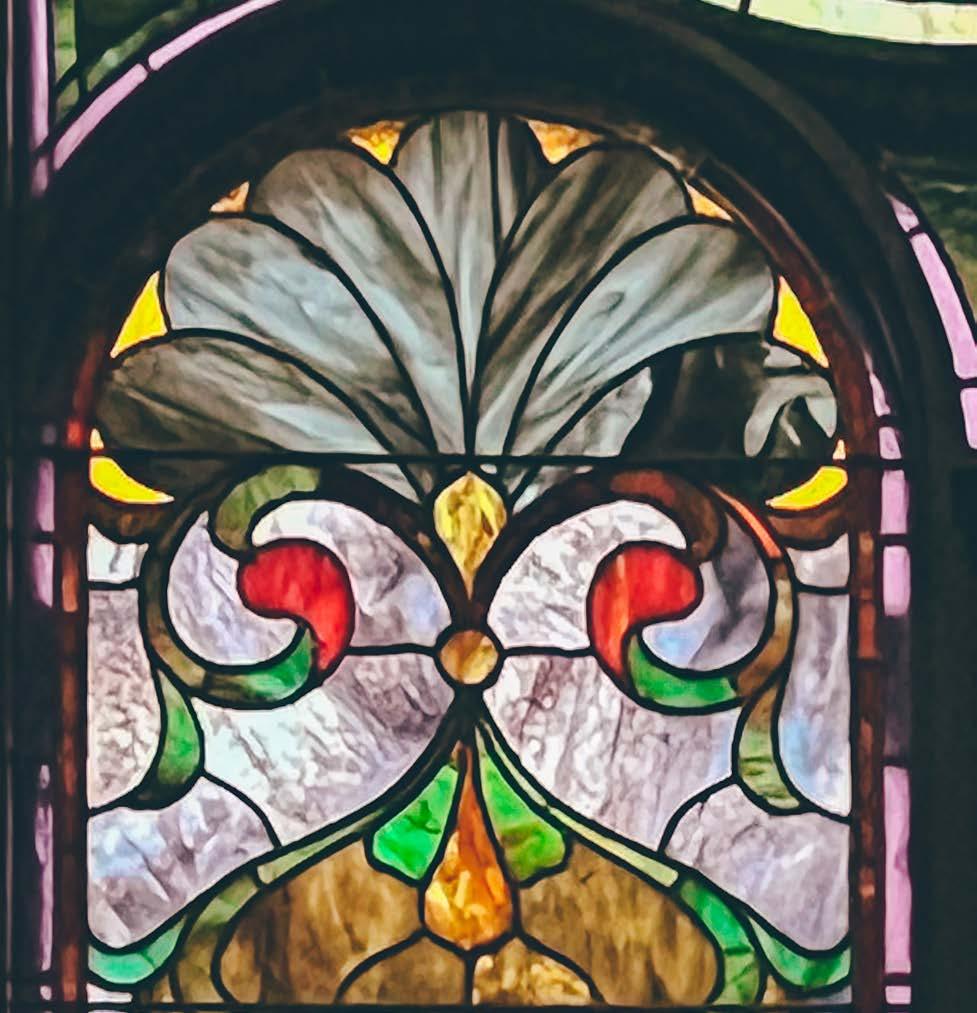
WO RD FORE-
TRADITION. LEADERSHIP. COMMUNITY.
One hundred and y years ago, a small group of men joined together to create a “chevra” for divine worship.
In the early years, they met at various rented venues in the neighborhood; the first High Holiday services were held in the Parupa Hall, on 86th Street and Third Avenue.
It is unclear what exactly this initial group of members envisioned when they got started; they probably aspired to eventually obtain a building of their own and become a sevenday-a-week synagogue.
What actually happened was far more dramatic. Kehilath Jeshurun became a community with a unique tradition. It pioneered a mix of Orthodoxy and modernity, an American Judaism that could appeal to every Jew. KJ is a synagogue that is profoundly committed to the Jewish people, through activism, outreach, and education, and is a world-renowned institution that is a role model for many other congregations.
There are so many remarkable stories, so many historic moments, and so much that makes KJ unique.
Tonight, at our Annual Dinner in celebration of 150 exceptional years, we are sharing with you this book filled with the highlights of the past, a look back at a history of tradition, leadership, and community.
But KJ is not just about its history. The final pages offer a short glimpse at our dynamic and flourishing community today; and we look forward to doing so much more in the future.
May we be blessed to continue to inspire our community and the Jewish world for many years to come.
3
TRADITION
Building a Home ii Prayer iii Torah iv American
i
Orthodoxy I
01 Laying the cornerstone, May 4, 1902; Left to right: Rabbi Meyer Joshua Peikes, Moses Davis, Isaac Cohen, Abraham Levy.

1
“Congregation Kehilath Jeshurun –
The corner-stone of the new synagogue of Kehilath Jeshurun will be laid
Sunday afternoon May 4th at 3 P.M.
The building is situated at 117,119 East 85th Street between Lexington and Park Avenues. Addresses will be delivered by Rev. Perera Mendes, the Rev. J.M. Asher, the Hon. Jacob Cantor, Judge Greenebaum, and Mr. Simon M. Roeder. The corner-stone will be laid by Mr. Jacob H. Schiff. The prayer will be given by the Rev. Dr. Bernard Drachman. Music will be furnished by the band of the Hebrew Sheltering Guardian Society. The cantor will be the Rev. S. Jacobson. Dr. Solomon Schecter is expected to be present as an honored guest, but he will not speak.”
- The American Hebrew, May 2, 1902
2 Left, Membership form of Meyer Jarmulowsky, 1894; he was from a prominent banking family that started out on the Lower East Side.

BUILDING A HOME
3 “The New Kehilath Jeshurun Synagogue,” The Hebrew Standard, May 9, 1902.
4 Original KJ building on 127 East 82nd Street which was built in 1883.
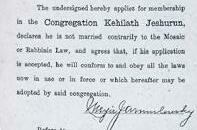
I TRAD ITI ON i BUIL D I N G A H O ME / E AR LY BEGI NN I N GS 6
KJ started in 1872 when Abba Baum, Frank Ephraim Goldman, I. Gruhn, Jacob Hecht, M. Levy, and Jacob Webster, among others, decided to form a "chevra for divine worship." The congregation began to grow, and in 1883, constructed a small synagogue building at 127 East 82nd Street.

The congregation flourished and attracted well-known and influential members.
By 1898, the congregation began to search for a property on which to build a larger synagogue building. The groundbreaking in 1902 was a gala affair, including Jacob H. Schiff, widely acknowledged as a leader of New York Jewry.
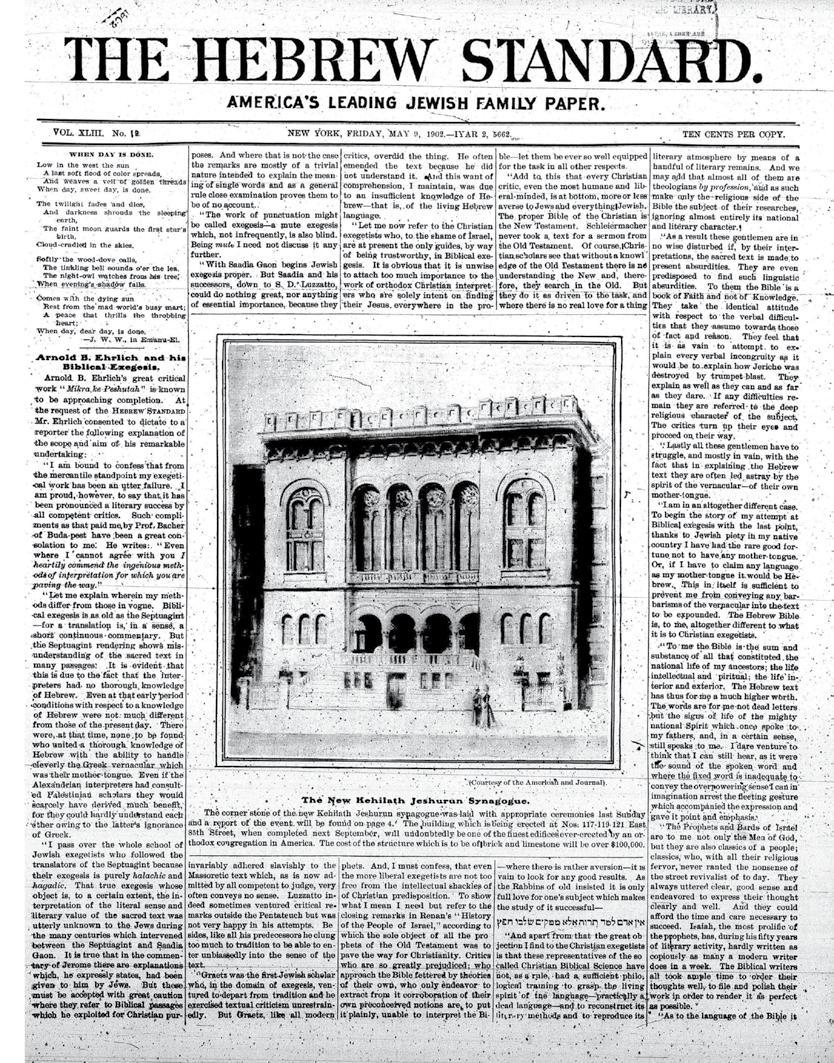
The Hebrew Standard remarked that “the cost of the structure, which is to be a brick in limestone, will be over $100,000.”
Already in 1902, great things were expected of KJ.


3 4
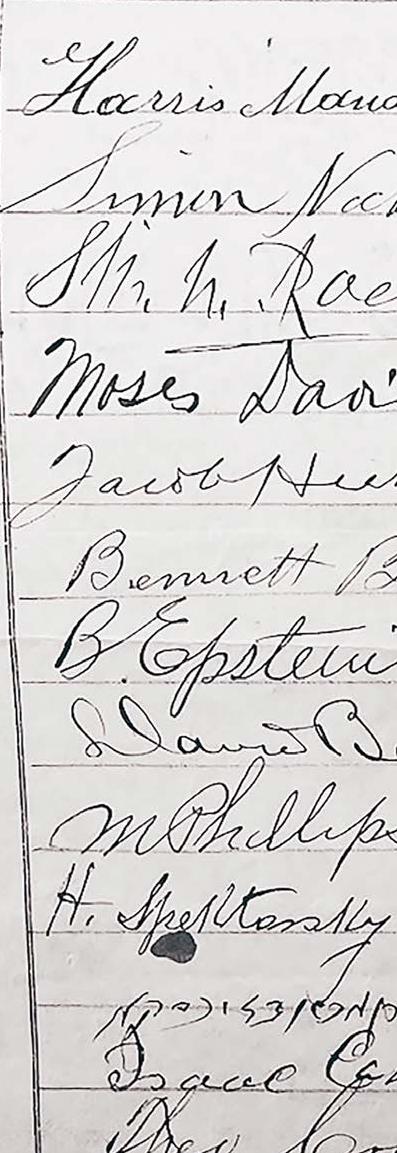
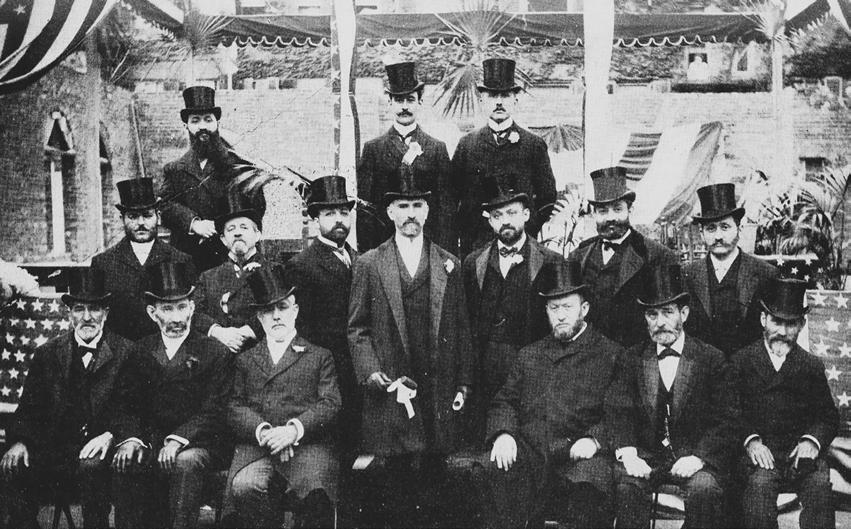
I TRAD ITI ON i BUIL D I N G A H O ME / E AR LY BEGI NN I N GS 8
6 05
06 / LAYING THE CORNERSTONE, MAY 4, 1902.
05 Quote and signatures from 1900 pledge agreement, to establish a “fund for erecting a synagogue on the premises...known by the street numbers 119-121 East Eighty Fifth Street...”
07 Original property deed for 1902 building at 117-121 East 85th Street.

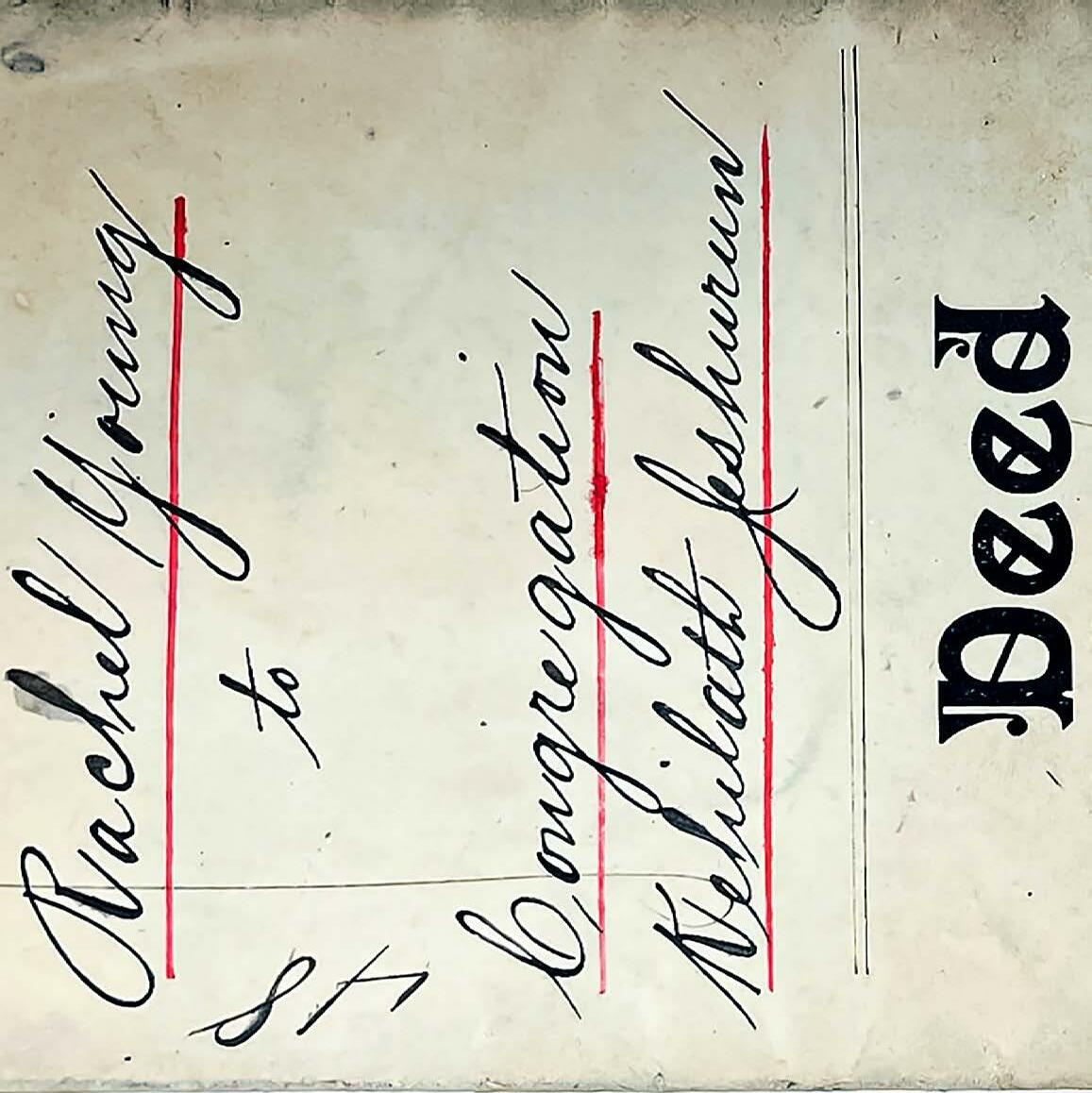
9
07
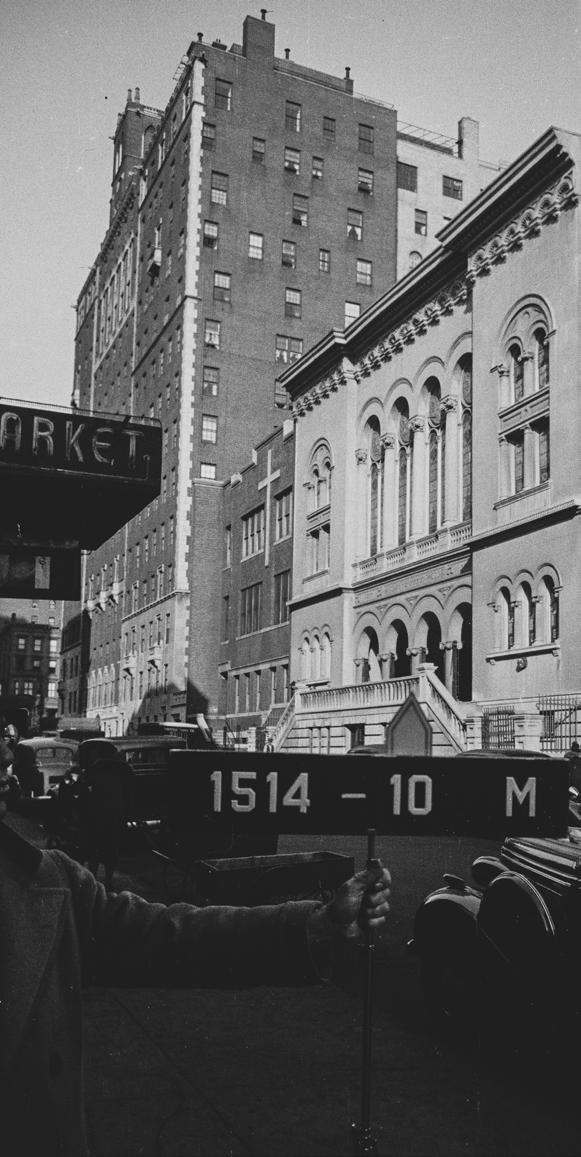
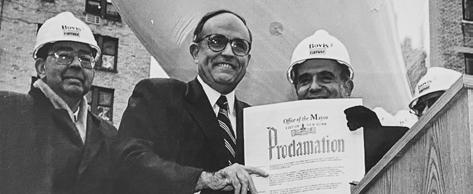
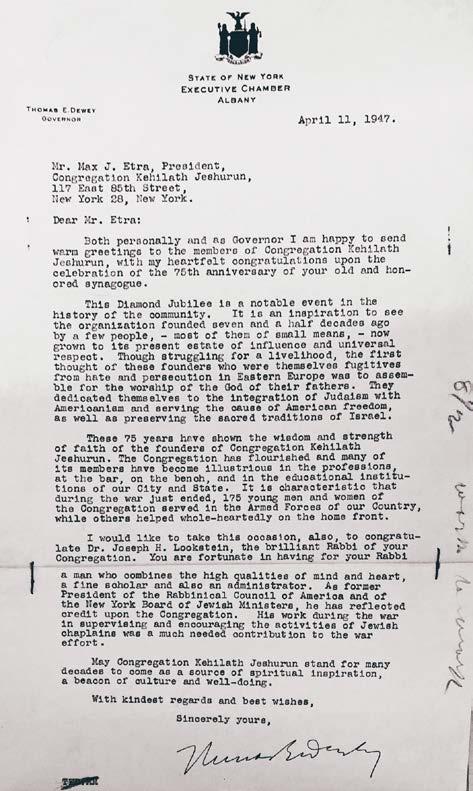
I TRAD ITI ON i BUIL D I N G A H O ME / A CHIEVI N G P RO MI N E N CE 10 09 10 08
08
1940 tax department photo featuring the grand staircase on the facade of KJ. The staircase was removed in a 1948 renovation.
09 Letter from Thomas E. Dewey, Governor of New York, congratulating KJ on its 75th anniversary; April 11, 1947.
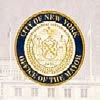
10 Mayor Giuliani presenting Rabbi Haskel Lookstein with a proclamation for his 40th anniversary as principal of the Ramaz School; January 19, 1997.
11 Proclamation from Mayor Eric Adams declaring September 5, 2022 to be Congregation Kehilath Jeshurun Day.
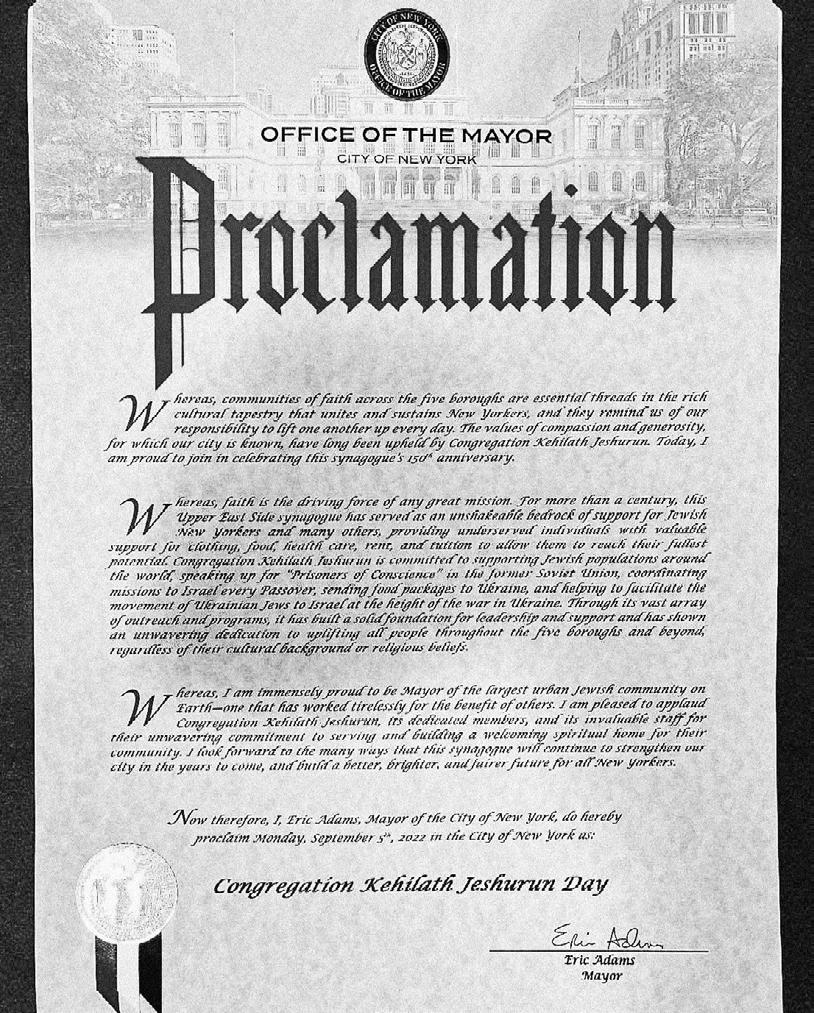
11
11
“Forty fire units and a hundred and seventy F.D.N.Y. were dispatched to battle the blaze that ripped through the hundred-and-ten-year-old synagogue late Monday night.” - The New Yorker, July 12, 2011
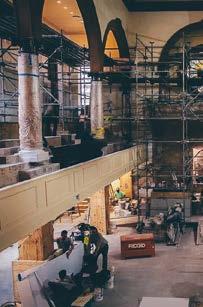

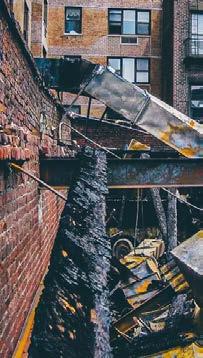


I TRAD ITI ON i BUIL D I N G A H O ME / R EBUIL D I N G A FTE R C A T A ST RO PHE
12 12
We lost a building—not


a congregation.

On the night of July 11, 2011, KJ suffered a devastating fire. However, we refused to mourn the loss; rather, we resolved to rebuild and restore. Thank God and thanks to the work and generosity of the KJ community, we were blessed to be able to do just that.
13 The aftermath of the fire, 2011.

14 Our sanctuary scaffolded during its four year restoration.
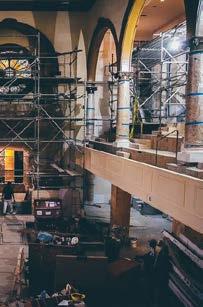
15-17 Details from the renovated building; mezuzah in the Rohr Chapel; stained glass and front view of the ark in the Main Sanctuary.
Top quote: Rabbi Haskel Lookstein quoted by the Jewish Telegraphic Agency, July 17 2012.

13
15 13
17
16 14
PRAYER

has always been the centerpiece of religious life at KJ. It was the need to pray as a community that brought the Jews of Yorkville together in 1872.
In a time when traditional synagogues were on the decline, the leaders of KJ demonstrated that Jewish prayer can be traditional yet orderly, honorable, & decorous.
I TRAD ITI ON ii P RA YE R
18 14
19 Hoshanah Rabbah prayers in the Main Sanctuary, 1988; standing at pulpit, Mr. Israel Rosenberg, KJ’s Ritual Director.

20 KJ Bulletin, September, 1930.

21 Youth Megillah readers from 1977 including Isaac “Bougie” Herzog, the future 11th president of Israel, third from left.

15
21 20 19
KJ introduced communal recitation of prayers, and prioritized active participation in singing rather than solo performances. This enabled the congregation to feel more strongly connected to the liturgy.
22 Father-Son Minyan run by Rabbi Haskel Lookstein, 1957.

23 Bat Mitzvah reading Torah at Women’s Tefillah, August, 2021
24 Lecture in Main Sanctuary, November, 2022

I TRAD ITI ON ii P RA YE R 16
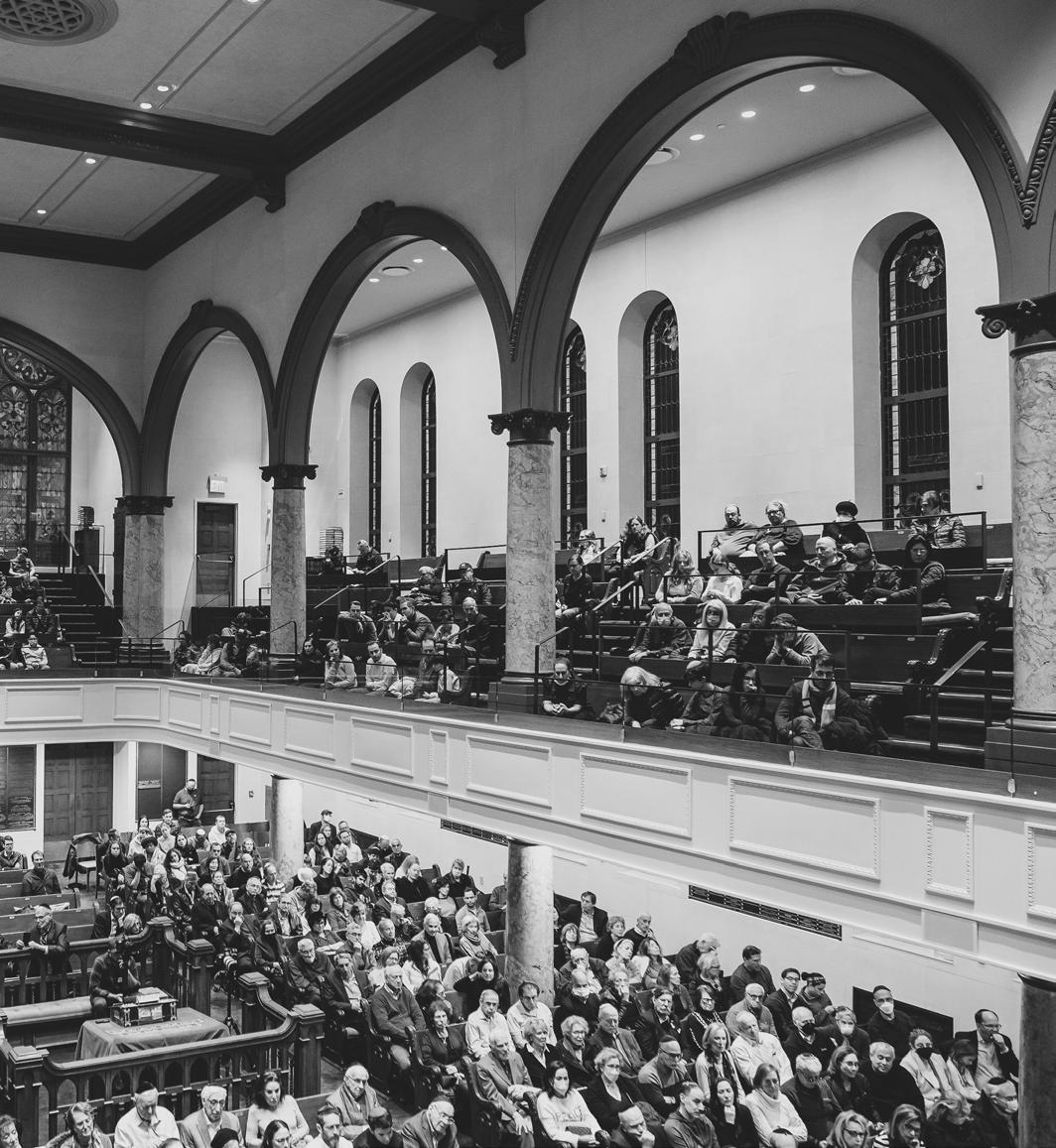
17
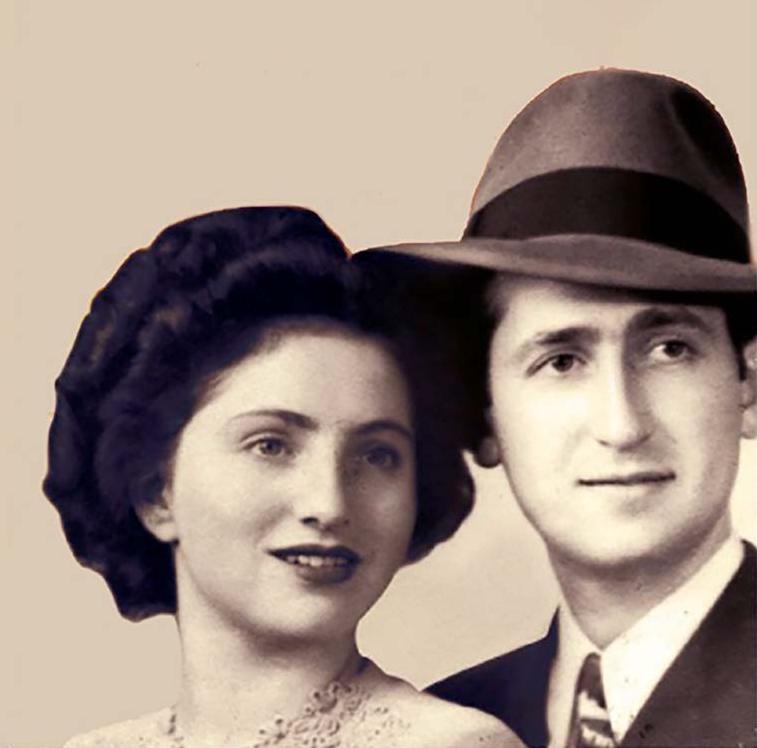




I TRAD ITI ON ii P RA YE R 18
25
Mrs. Esther and Cantor Avrum Davis KJ Bulletin, September 1973 26
Around the world, those who learned to pray at KJ can be identified for their distinct nusach, having been trained by the ritual directors, Mr. Joseph E. Adler and Mr. Israel D. Rosenberg, or the Rabbis Lookstein.

“In the historical address, which was delivered by Simon M. Roeder, Esq., reference was made to the starting of the congregation in 1873, at a meeting held in the home of Abraham Baum, one of the Jewish residents of Yorkville. A chevra was then started and Abraham Baum volunteered his services as chazan, and officiated for many years, on Sabbaths and holy days, with a sweetness of voice and a clearness of enunciation which emanated from a heart and soul imbued with God’s loving-kindness.”
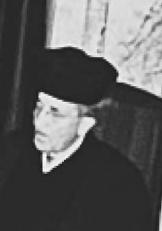

From The American Hebrew, May 2, 1902, “Laying the Cornerstone for Kehilath Jeshurun”

19
Left, a soundwave image of a recording of Rabbi Haskel Lookstein’s nusach for Rosh Chodesh.
27 28 29 31
28
& 29 KJ Cantors through the years KJ Bulletin, November 1990 31 Rabbi Bakst, Dean of Ramaz Upper School, leading students in prayer.
30
From the very beginning, KJ took
TORAH
scholarship and study seriously. In 1904, KJ invited one of the great European rabbis, the Ridvaz, Rabbi Yaakov Dovid Wilovsky, to o ciate for the High Holidays. Two years later, KJ engaged Rabbi Moses Zevulun Margolies, who was a world-renowned scholar, as its rabbi.

O RAH
TORAH
20 I TRAD ITI ON iii T ORA H
32
TORAH
TORAH TORAH
33 Dedication of the Torah in memory of Rabbi Joseph Lookstein, 1980. Pictured are Rabbi Haskel Lookstein and Nathan Salzman, president of the synagogue at the time.

RAH
34 Dedication ceremony of 13 new needlepoint Torah covers made by members of the KJ Sisterhood, 112th Annual Synagogue Meeting, May 13, 1984.
35 Rabbi Haskel Lookstein joins in the Moscow Choral Synagogue procession on Hoshanah Rabbah morning during a mission to support Soviet Jewish refuseniks, 1972. Rabbi Yakov Fishman, Chief Rabbi of Moscow, left.


32 Torah procession including Max J. Etra, president of the congregation, Harold Jacobs, then president of the OU. 33 34 35
TORAH
36 Rabbi Roy Feldman showing Torah to second graders, 2022.

21
KJ Bulletin, December 1972

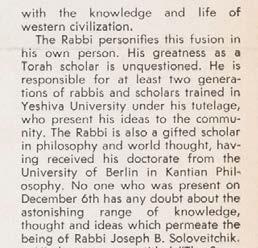





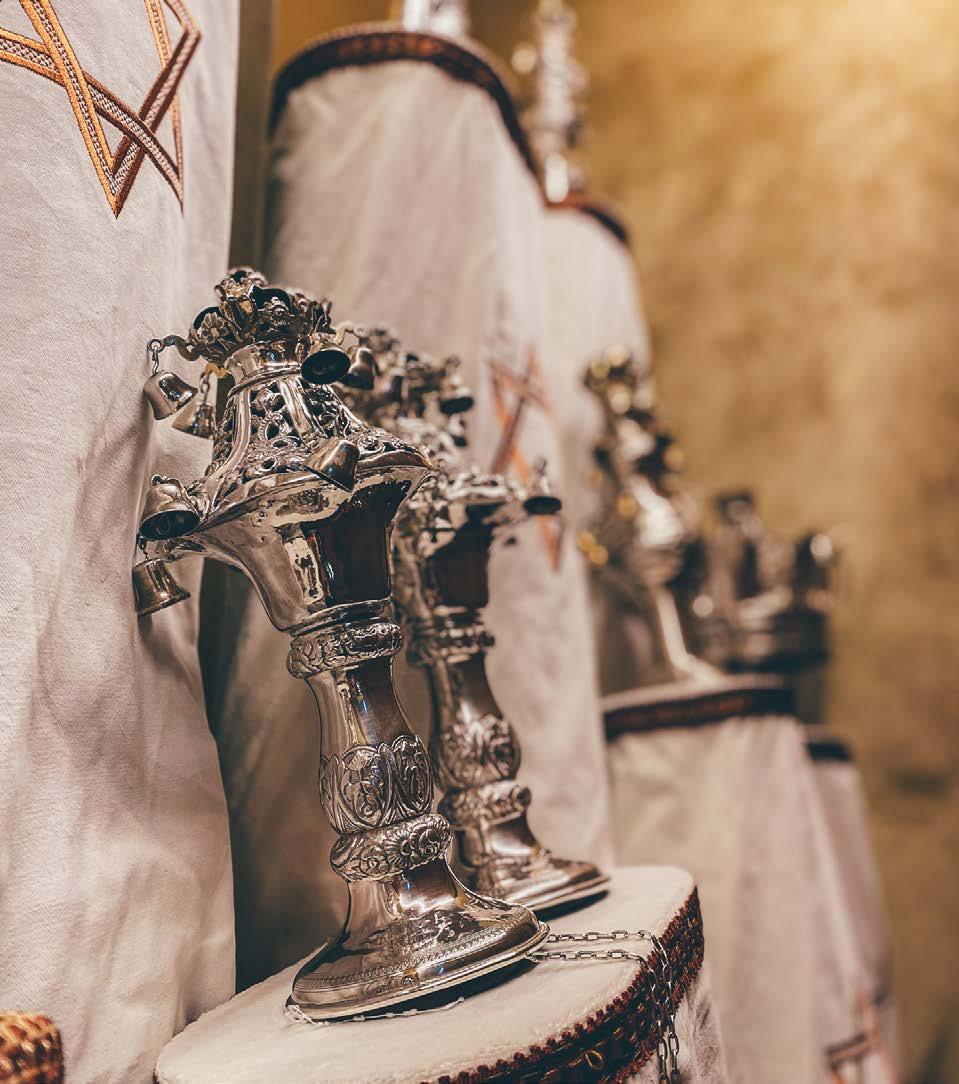
22 37 38 I TRAD ITI ON iii T ORA H
Rabbi Joseph B. Soloveitchik prepares to deliver
Through the decades, KJ has been a home of Torah learning and scholarship, with extraordinary classes given by rabbis, laypeople, and visiting scholars.
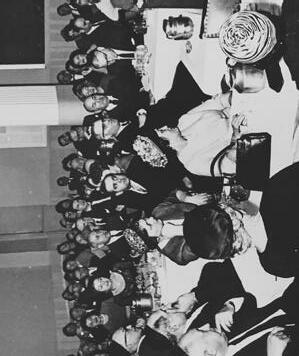







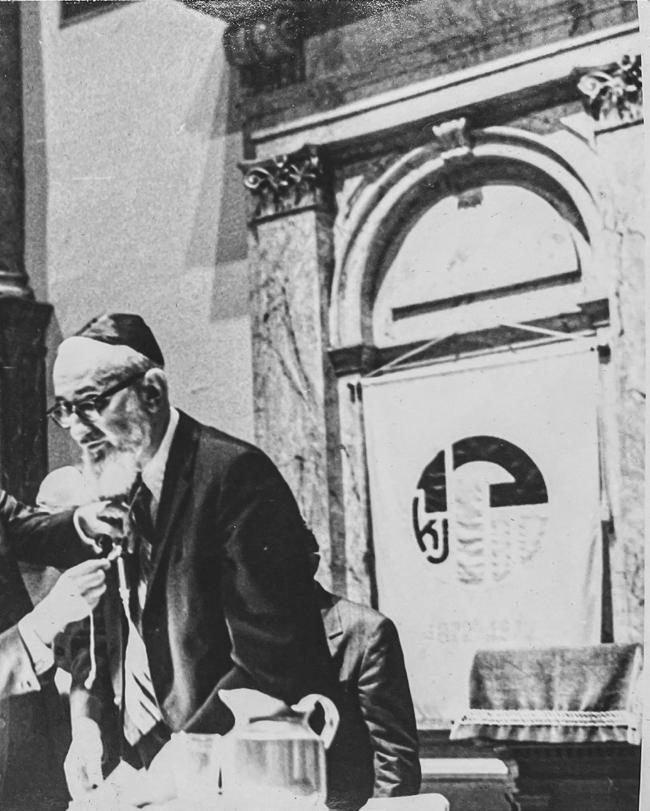
23
41
40 40b
39
Rabbi Joseph Lookstein addresses a Supper Lecture, 1961
the Centennial lecture in the Main Sanctuary, December 6, 1972.
Adult Education Talmud Class, 1961
I T RAD ITI ON iv A ME R IC AN OR TH ODO XY KJ HAS STOOD AT THE FOREFRONT OF WHAT WAS CALLED “AMERICAN ORTHODOXY,” AN ORTHODOX JUDAISM THAT WOULD BE BOTH UNAPOLOGETICALLY LOYAL TO THE TORAH, AND AT THE SAME TIME MODERN, FORWARD-LOOKING, AN D AMERICAN ORTHO DOXY יח לארשי םע 24
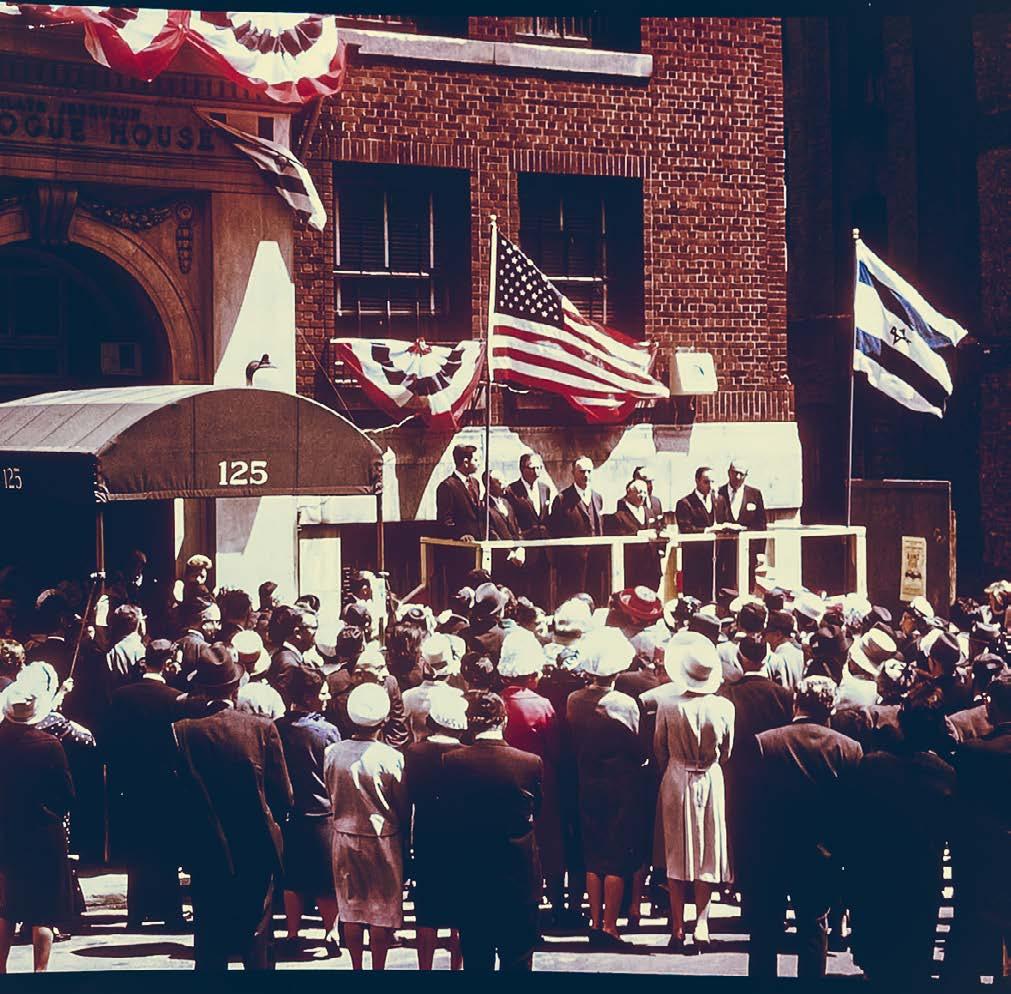 42 / Cornerstone laying of the expansion of the Synagogue House, 1964.
42 / Cornerstone laying of the expansion of the Synagogue House, 1964.

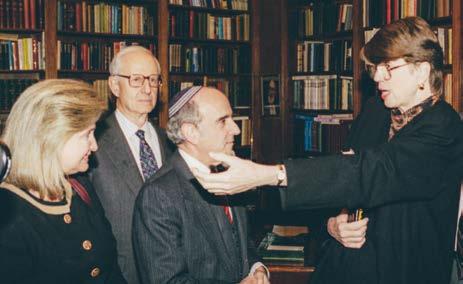
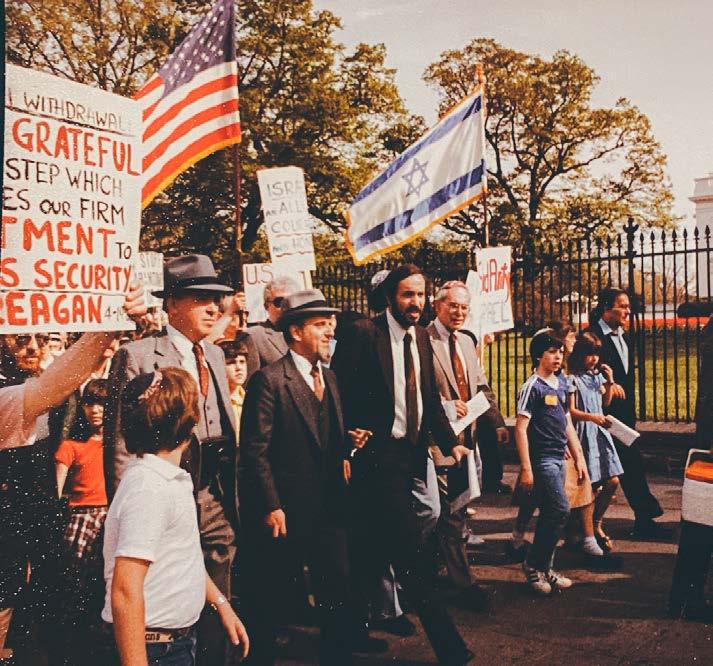

26 I T RAD ITI ON iv A ME R IC AN OR TH ODO XY
43 Rabbi Haskel Lookstein marching in a Washington D.C.
44 U.S. Attorney General Janet Reno visits KJ, February 1994.
45 Rabbi Joseph Lookstein with Senator F. Kennedy and Dr. Belkin, President
D.C. rally on April 25, 1982.

In an address to the New York Board of Rabbis, Rabbi Joseph Lookstein said “In the synagogue, in the service, in the character of the rabbi, and even his appearance, in the language of the sermon, in a sense of organization and solidarity, in the establishment of modern . . . educational, recreational and welfare institutions, we have demonstrated in traditional Judaism that we are capable of adaptation to the new world .”


46
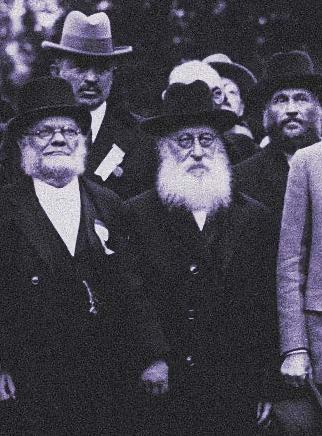
27
Rabbi Margolies with a delegation of Religious Zionist rabbis, including Rabbi Meir Bar-Ilan, meeting with President Calvin Coolidge outside the White House, 1926.
Senator Robert President of YU.
KJ pioneered an orthodoxy that was con It would
One did not have to choose between being Jew. As Rabbi Haskel Lookstein put it, a a part of the world, while at the same time “
Annual Meeting, 1957


I T RAD ITI ON iv A ME R IC AN OR TH ODO XY 28 47
be attractive to young Jews who
standing
48
49
– and it was this type of Orthodox Jew that KJ cultivated.
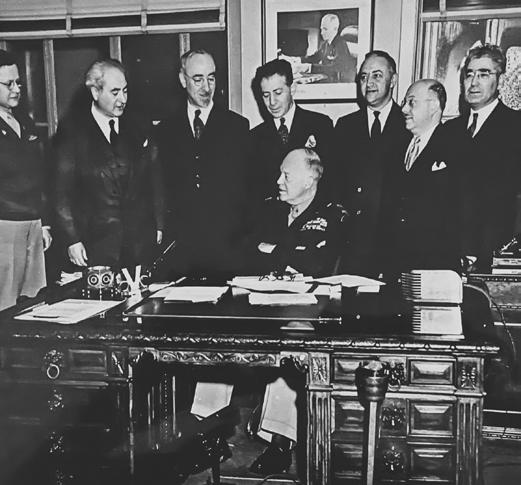

29
from the world a p a r
t a p a r
t a p a r
t a p a r
t a p a r
t a p a r
t a p a r
t ”
-temporary, digni ed, and decorous. were well-educated and successful. a successful person and being a serious contemporary Orthodox Jew should be
Rabbi Joseph Lookstein as Chairman of the Chaplaincy Commission of JWB visits General Eisenhower. Thanksgiving Services, 1967
We pray sincerely for America and the ideals of democracy and freedom that are here enshrined. May she be strong to withstand all the currents that assail her and all the forces of evil that would invade her sacred precincts. A tower of light to her own citizenry, may she cast a steady beam and light up all the dark areas of the world and show to a perplexed and straying humanity the path of freedom, of life and of peace.


30 I T RAD ITI ON iv A ME R IC AN OR TH ODO XY
Thanksgiving Prayer by Rabbi Joseph H. Lookstein (1940)
50
CONGREGATION KEHILATH JESHURUN 117 East 85th Street, New York City
democracy and freedom
ORDER OF SERVICES
MA TOVU – Levandowsky
Cantor Fingeroth and Choir
PROCESSION OF THE COLORS
The congregation will rise at the entrance of the color guard and will remain standing until after the singing of the national anthem.
PRESENTATION OF AMERICAN FLAG
Ira F. Weisman, President, Men’s Club
The flag will be accepted by Mr. Max J. Etra, President of the congregation
NATIONAL ANTHEM Congregation and Choir
PRESIDENT ROOSEVELT’S
THANKSGIVING PROCLAMATION
Max J. Etra, President of the Congregation
THANKSGIVING PRAYER
Rabbi Joseph H. Lookstein
The congregation will recite in unison the last verse of the prayer.
LO AMUS – Machtenberg Cantor Fingeroth and Choir
OFFERTORY
THANKSGIVING ADDRESS
Hon. Charles Poletti, Lieutenant-Governor, State of New York
OLENU Congregation and Choir
ADON OLAM – Traditional Congregation and Choir
BENEDICTION
Thanksgiving Prayer by Rabbi Joseph Lookstein
Thursday, N ovember Twenty-first, Nineteen Hundred and Forty, 11:00A M
31
We pray sincerely for America and the ideals of
that are here enshrined.
THANKSGIVING SERVICES
ERSHIP Clergy i Spiritual & Lay Leaders ii Rabbi Moses Zevulun Margolies iii Rabbi Joseph Lookstein iv Rabbi Haskel Lookstein II Activism v Soviet Jewry vi Solidarity vii Israel Rabbi Haskel Lookstein at the Salute to Israel Parade, 1968. Yitzhak and Leah Rabin are in the background. 01
LEAD-





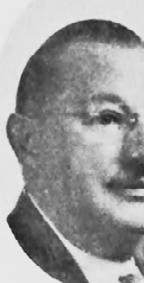
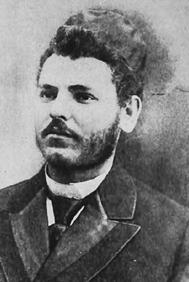



II L E AD E R SHIP / CLE R GY 34
Joseph Polstein Jacob D.
Rabbi Herbert S. Goldstein Rabbi Elias L. Solomon Rabbi Mordecai M. Kaplan Rabbi Meyer Joshua Peikes 1901-1909
1906-1936 1919-1922 1913-1918 1885-1903
Rabbi Moses Zevulun Margolies
2 3




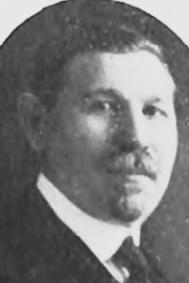

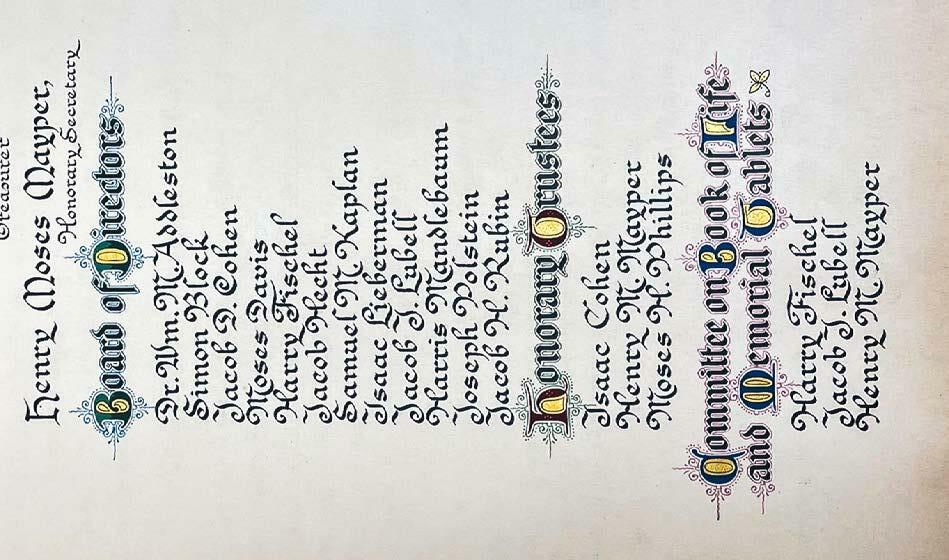 Cohen
Cohen
CLERGY 4 / Rabbis and Officers listed in the 1920 congregational “Book of Life”
Moses H. Phillips Moses Davis Jacob Hecht Harris Mandlebaum Jacob H. Rubin
Past Presidents Of Kehilath Jeshurun 1872-1940
SPIRITUAL &
A synagogue is not about the building or the sanctuary; it is always about the people, those who join together as a congregation in community and prayer. And in each congregation, there are remarkable people who step forward, without whom there would be no community.
KJ has been fortunate to have had an extraordinary group of rabbis, cantors, and lay leaders over the years. Their leadership has made a lasting impact on our synagogue, and their devotion is an enduring part of our legacy.

Rabbi Haskel Lookstein
Rabbi Joseph H. Lookstein
Rabbi Shear Yashuv Cohen, Chief Rabbi of Haifa
Max J. Etra, President (1940-69)
Joseph Roth, Vice President
Irwin
A.
36
Shapiro, Secretary
Joseph Cohen, Cantor
5
6 Rabbi Joseph H. Lookstein in the Pulpit at Thanksgiving Day Service. Rabbi Haskel Lookstein far left; Cantor Samuel Vigoda to the right of the Holy Ark; Samuel Marcus to his left.
II L E AD E R SHIP i SPI R ITU A L & L A Y LE AD E R S
Elgin Shulsky, Treasurer
LAY LEADERS
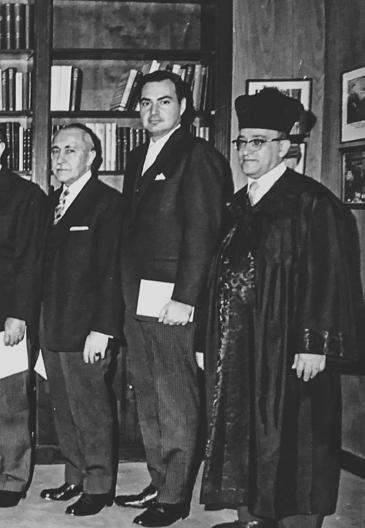
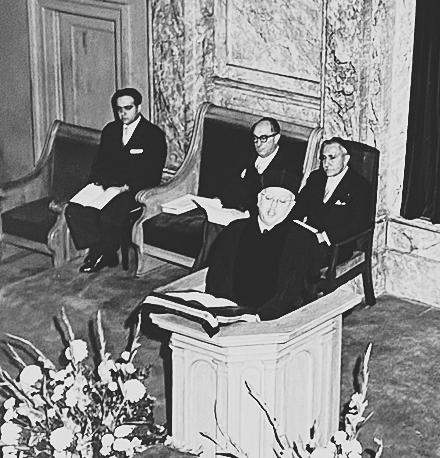
37
6
Rabbi Joseph Lookstein said that the RaMaZ’s “two outstanding traits…were his passion for learning and his tolerance….. The former made him one of the most PROLIFIC Jewish students in the land, who no less than thirty-eight times began and completed the Talmud…The latter virtue made him one of the most liberal interpreters of Jewish law, seeking always to make the Torah the law of life for the Jew.”
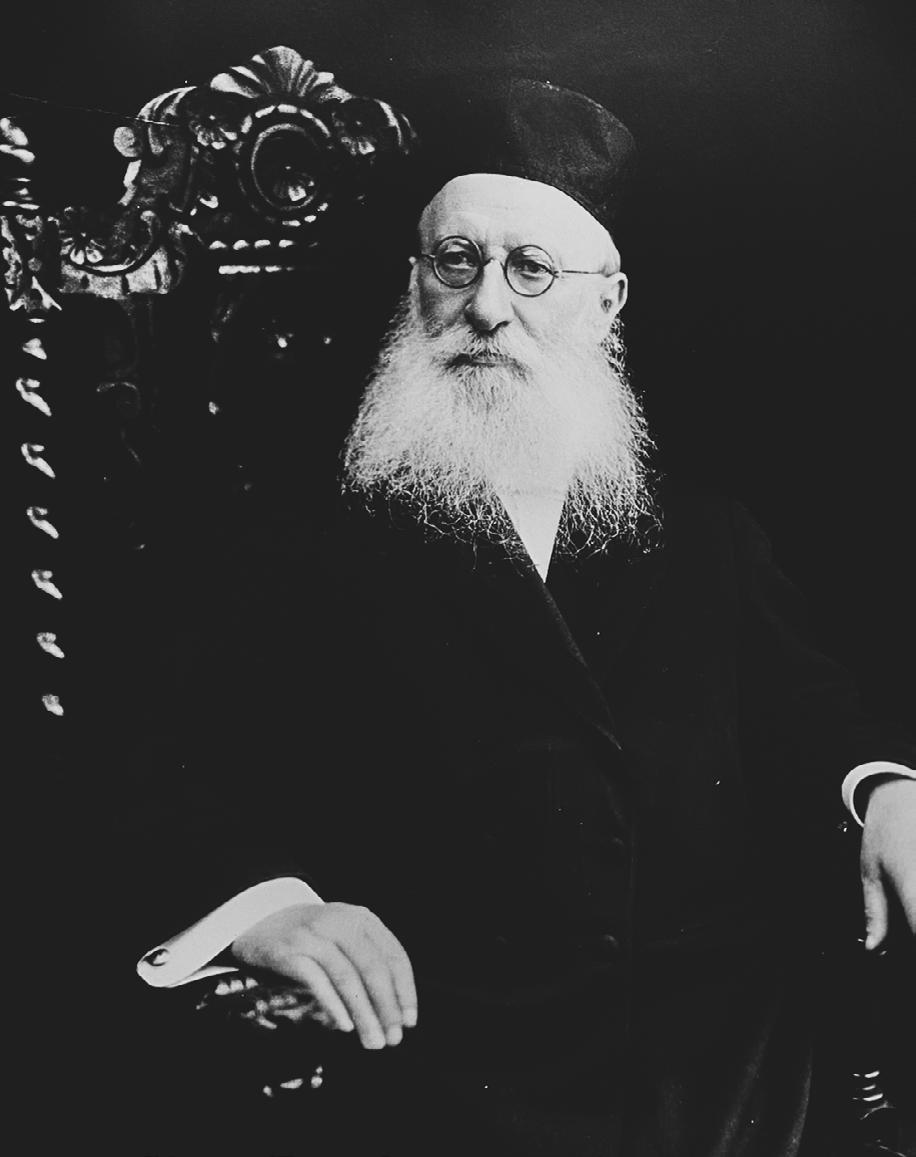
L E AD 38
II L E AD E R SHIP ii RA BBI M. M AR G O LIES
Rabbi Moses Zevulun Margolies

8

39
7 / Rabbi Margolies, at right holding sifter, making matzoh with the then Chief Rabbi of Palestine, Abraham Isaac Kook, The Forward, April 5, 1925.
/ Rabbi Margolies appears with Rabbi Ezekiel Lipschitz, President of the Union of Rabbis of Poland, on May 8, 1926. The rabbi came to America to personally thank the US President for aid given by Americans to destitute Jews in Europe. Shown are Rabbi B.L. Leventhal, Philadelphia; Rabbi Margolies; Hyman Ehrlich, secretary to Rabbi Leventhal; Rav Libschitz; Rabbi Eliezer Libschitz; Polish Minister Jan Ciechanowski; and NY Congressman Nathan D. Perlman.
Rabbi Moses Zevulun Margolies, or the RaMaZ, served as the rabbi of Kehilath Jeshurun from 1906-1936. He was ordained by his uncle, Rabbi Yom Tov Lippman Halpern, the author of the Oneg Yom Tov. He served as a Rabbi in Slobodke before taking a rabbinical post in Boston in 1889.
In New York, the RaMaZ was immediately recognized by the entire Jewish community, from Reform to Orthodox, as its leading rabbinic scholar. He was an early Zionist, and a leader of the Mizrachi Organization of America. He also served as president of the Rabbi Isaac Elchanan Yeshiva (which ultimately became Yeshiva University). At his funeral, Dr. Bernard Revel, Dean of Yeshiva College, said: “Rabbi Isaac Elchanan Theological Seminary would never have been able to exist were it not for Rabbi Margolies’ efforts.”
1929 graduating class of rabbis at the Rabbi Isaac Elchanan Theological Seminary (RIETS). Seated in the front row are Rabbis Binyamin Aranowitz, Bernard Leventhal, Bernard Revel, Shimon Shkop, Moses S. Margolies, Benjamin Selmanowitz.

Mayor John P. O’ Brien of New York City, left, listens to Rabbi Margolies, President of the Congregation of the American Orthodox Jews, as he addresses the audience at a meeting at the Madison Square Garden, May 4, 1933.
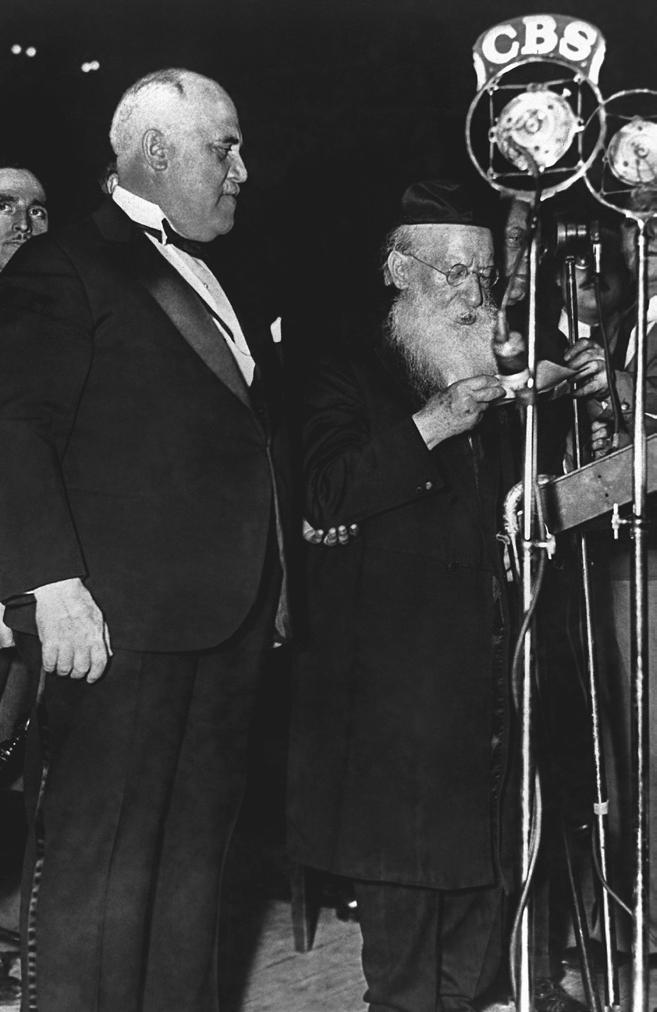
II L E AD E R SHIP ii RA BBI M. M AR G O LIES 40
9 10
The New York Times wrote:
“Anti-Semitism in Germany moved (Rabbi Margolies) so deeply that he rose from a sickbed on March 27, 1933, to address a protest mass meeting at Madison Square Garden.


Dean of the Orthodox Jewish rabbinate in this country, he brought the audience of 20,000 to its feet as he pronounced a prayer in Hebrew asking that the persecutions cease ....”
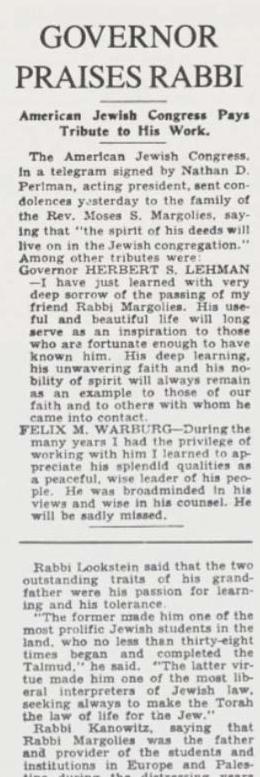
11 12 41
Rabbi Joseph Lookstein was born at a time when the vast majority of American Jews, (who. like his family, were immigrants to this country), thought that one had to choose between being an Orthodox Jew and being integrated into society; to many, leaving Europe meant leaving behind tradition and halakhah. Rabbi Lookstein transformed the American scene by being a role model of a different path. In autobiographical remarks about the role he played in the American rabbinate, he wrote:

“A marked example of the changed character of Jewish life in this country was the new English-speaking rabbi who was called to the congregation in 1923. For the first time, the pulpit was occupied by a rabbi whose entire rabbinic training was received in an American Orthodox Yeshiva. The young rabbi was a product of Jewish parochial schools of New York. He was ordained by the Rabbi Isaac Elchanan Theological Seminary and the signatories on his ordination certificate (s’micha) were some of the most recognized rabbis and scholars of the day.

II L E AD E R SHIP iii RA BBI J. L OO KSTEI N 42
continues on next page) 13
He represented, therefore, a synthesis of the old and the new, the Yeshiva and the University, the traditional s’micha and the academic degree. (quote

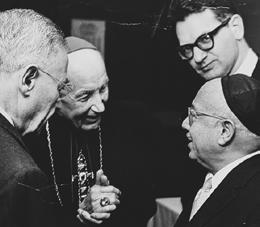

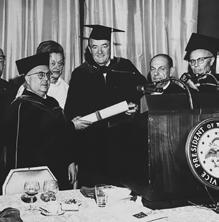
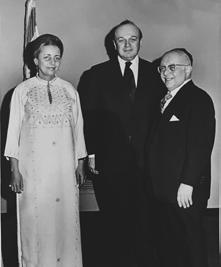


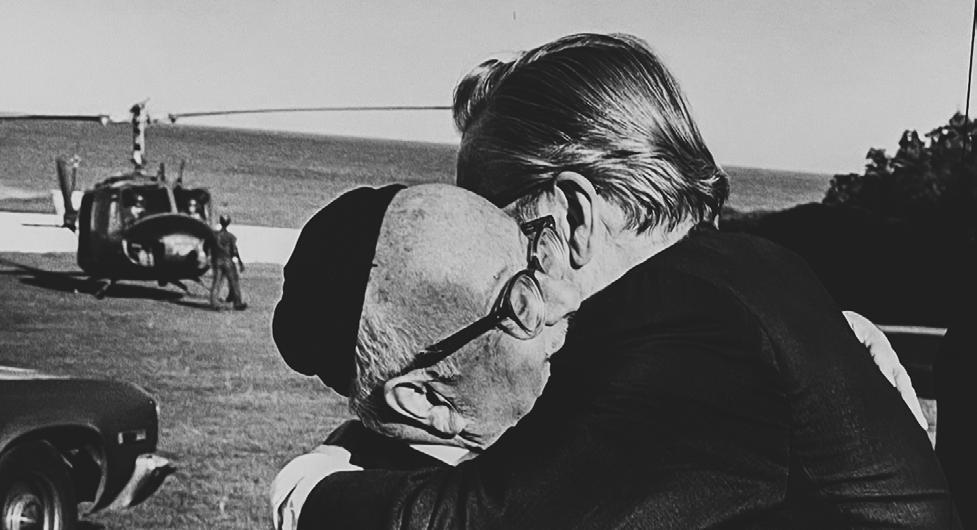
43 14 17 15 18 19 20 21 16
Rabbi Joseph Lookstein was truly a bridge builder. His son, Rabbi Haskel Lookstein, noted the following in his eulogy:

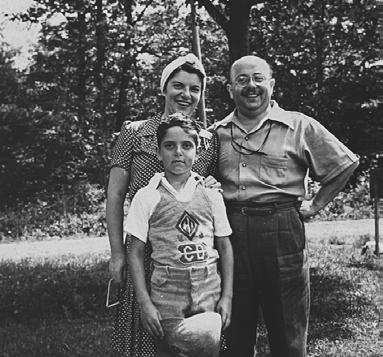
“It was not surprising that the news of my father’s illness elicited prayers from the great sage and tzadik, the Rebbe of Lubavitch, even while it brought forth beautifully expressed words of encouragement from Reform rabbis and Jews in the philanthropic community who would classify themselves as secular.”

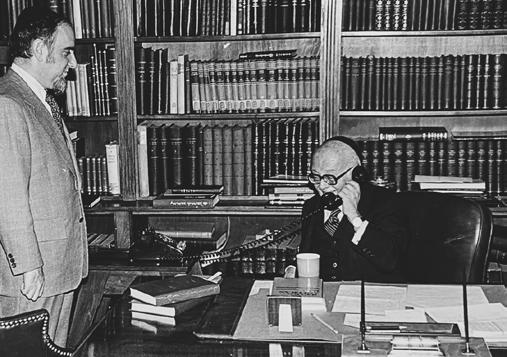
44
24
R SHIP iii RA BBI J. L OO KSTEI N 22
23
22 The Jewish Week-American Examiner, week of August 5, 1979. 23 Haskel Lookstein with his parents at Camp Dalmaqua in Barryville, NY.
Here, then, was a symbol of what American Judaism could achieve – an Orthodox rabbi trained in a traditional Yeshiva, possessing the
Rabbi
His
rabbinic learning
25
“He was one of the few, if not the only man, to have held all these positions during a crowded lifetime: President of the Rabbinical Council of America, of the Mizrachi Zionist Organization, of the Commission on Jewish Chaplaincy of the Jewish National Welfare Board, of the Synagogue Council of America and of the New York Board of Rabbis. In addition, he was Chancellor and former President of Bar-Ilan University.
During the war years, Rabbi Lookstein, as head of the Commission on Jewish Chaplaincy, helped in the recruitment of Jewish chaplains and their training, and supervised the hundreds of American rabbis who served in this country’s armed service. In this role, with the rank of general, he visited most of the military installations in this country and, after the war, he was sent by the Joint Chiefs of Staff to the European and Mediterranean theatres…His greatest achievement, however, was the founding of the Ramaz School in 1937…This was the first progressive Jewish Day School in the country, and the mold from which hundreds of Day Schools have been cast.”
14 Embracing Governor Nelson A. Rockefeller
15 Visiting the Commanding General of US Army Europe.
Left to right, General Philip E. Gallagher, Chaplain William H. Branyan Jr., Command Chaplain Harry Z. Schreiner, August 19, 1955.
16 With Ambassador and Mrs. Yosef Tekoah
17 With Elie Weisel
18 With Chief Rabbi of Israel
Isser Yehuda Unterman, far left, and Zalman Shazar, third president of Israel, second from right.

19 With the Cardinal
20 As newly elected chancellor of Bar Ilan University, presenting Bar Ilan’s first-ever honorary degree to Vice President Hubert Humphrey, 1966
21 With Albert Einstein, regarding naming the Yeshiva Univerity Medical School in Einstein’s name.
45
required
and at the same time commanding the language and culture of the modern day and comprehending the spirit and mood of America.”
Gertrude Lookstein, Abba Eban, and Rabbi Joseph Lookstein
Joseph Lookstein’s influence was extraordinary.
obituary in the JTA noted:
RABBI DR. HASKEL LOOKSTEIN
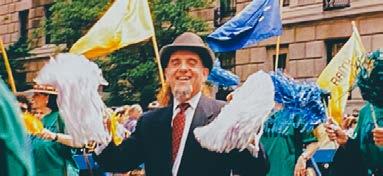

was the third member of his family to lead KJ, following his great-grandfather and father. In 1937, he joined the first class of The Ramaz School, and his studies continued at Columbia University and at Yeshiva University where he became a close student of Rabbi Joseph B. Soloveitchik (“the Rav”).
Together, his father and the Rav inspired Rabbi Lookstein’s approach in leading KJ and The Ramaz School, where he served as principal.
Rabbi Lookstein advocated for a vibrant modern orthodoxy that is
He was a passionate leader in the Soviet Jewry Movement and a fervent supporter of the State of Israel. He and Audrey have made over one hundred trips to Israel, thirty of which have been KJ Operation L’Hitraot Missions. He views himself primarily as a Jewish educator, advocating for the highest levels of both Jewish and general education for boys and girls, and teaching generations of Yeshiva University’s rabbinical students as the Joseph H. Lookstein Professor of Homiletics.
26
29 Inscription on watch given to Rabbi Haskel Lookstein by the congregation in honor of his inaugural sermon, June 16, 1958.
30 Meeting with Pope John Paul II
unquestionably orthodox &
31 With Yitzhak Shamir, seventh Prime Minister of Israel
46 II L E AD E R SHIP iv RA BBI H. L OO KSTEI N
unapologetically modern.
Rabbi Haskel Lookstein’s name has become synonymous with an Orthodox Judaism that is proud, levelheaded, cooperative, activist, ethical, educated, and inspiring. 27 29 30

Rabbi Lookstein championed a commitment to ethics and menschlichkeit as a foundation for Jewish religious life.




Throughout his career, he supported cooperation between Jewish denominations. Beyond just the Jewish community, he spoke out in favor of civil rights and ethical labor practices; his 1966 sermon was quoted in the New York Times : “It is the Talmud that states that no man is free unless he has economic opportunity, a chance for employment, the social possibility to work in any geographical and economic area in accordance with his God-given and acquired talents.”
28

47
31
Rabbi Lookstein’s doctoral dissertation was entitled, Were We Our Brothers’ Keepers?: The Public Response of American Jews to the Holocaust, 1938-1944, in which he details the indifference of the American Jewish community during the Holocaust. He was determined never to stay silent again when Jews suffered and emerged as a leading voice in fighting on behalf of the plight of Soviet Jewry. He and his wife, Audrey, traveled frequently to meet with Soviet refuseniks, inspiring many others to do the same.

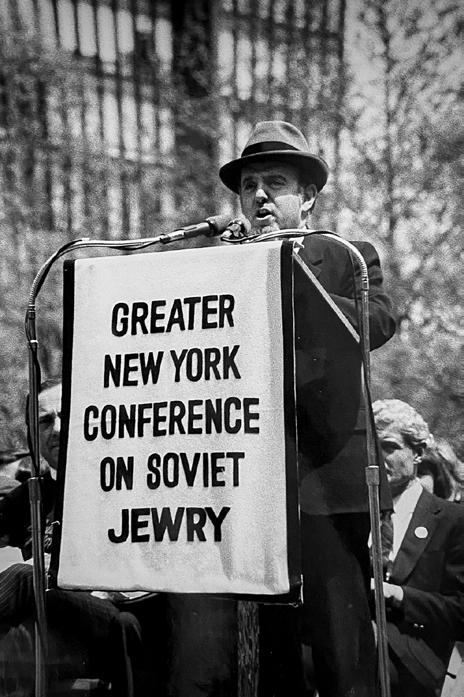
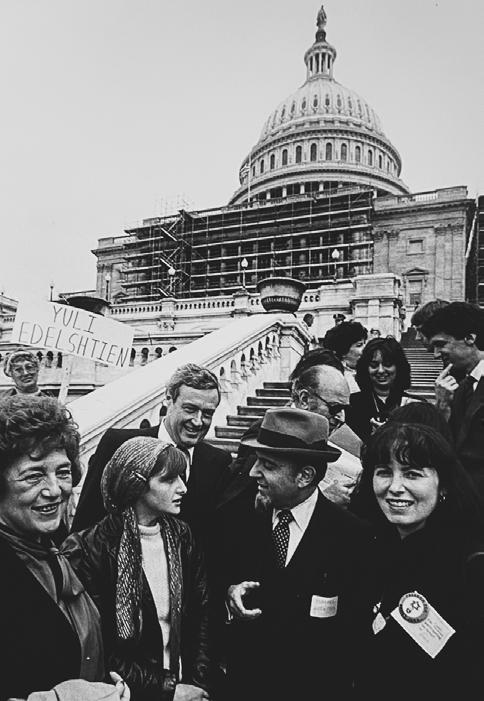
48
II L E AD E R SHIP iv RA BBI H. L OO KSTEI N
33 Soviet Demonstration; at the Capitol, October 8 1986. Rabbi Lookstein is talking to former refusenik, Tanya Edelstein. To her right is Lynn Singer, President of the Long Island Committee for Soviet Jewry. Behind the rabbi is Congressman Bill Green (our district) right and Jerry Goodman (left), Director of the National Conference on Soviet Jewry.
32 33


49
34 Rabbi Haskel Lookstein in conversation with Natan Sharansky and Malcolm Hoenlein, founding executive director of the Greater New York Conference on Soviet Jewry and the Jewish Community Relations Council of New York, November 13, 2022.
‘WE ARE JEWS ; we couldn’t be prouder ; and if you can’t hear us, we’ll yell a little louder ‘WE ARE JEWS ; we couldn’t be prouder ; and if you can’t hear us, we’ll yell a little louder ‘WE ARE JEWS ; we couldn’t be prouder ; and if you can’t hear us, we’ll yell a little louder ‘WE ARE JEWS ; we couldn’t be prouder ; and if you can’t hear us, we’ll yell a little louder ‘WE ARE JEWS ; we couldn’t be prouder ; and if you can’t hear us, we’ll yell a little louder

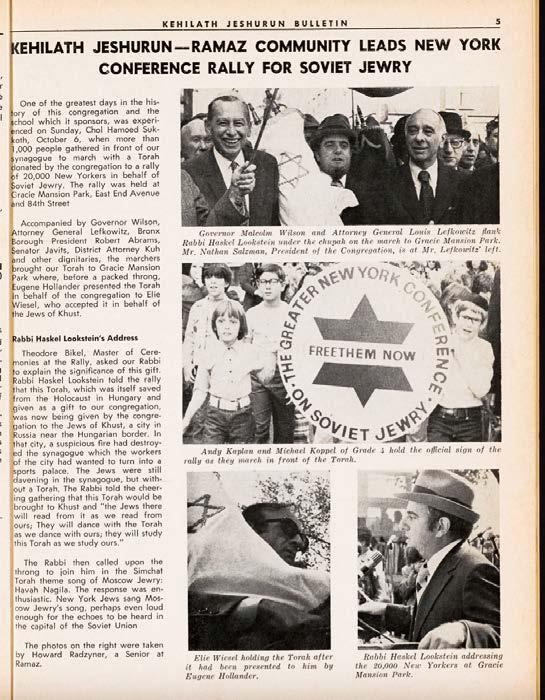
SOV IET
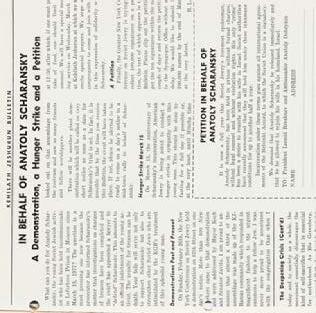

II L E AD E R SHIP v S O VIET JEW R Y
35 36
37
36 Rabbi Haskel Lookstein, March 10, 1978: “On Sunday, February 26th, the New York Conference on Soviet Jewry held a demonstration on 67th Street on one day’s notice. More than 600 New Yorkers came to that demonstration. I am proud to announce that almost a third of the assemblage was made up of the KJ-Ramaz community….. “

JEWRY ACTIVISM
37 On Day 24 of Natan Sharansky’s hunger strike, Rabbi Haskel Lookstein prays with students on 67th St, outside the Soviet UN Mission, December 7, 1982.
51
38
IET
“Audrey’s and my life changed as a result of our first two missions to the Soviet Union on Sukkot, 1972 and 1975. As our life changed, so did the life of KJ and Ramaz.
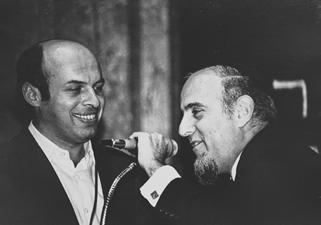
We all became activists in a grand cause to free our brothers and sisters in the Soviet Union. We marched down Fifth Avenue as proud and fearless Jews, protesting the plight of Soviet Jews. I remember how Ramaz Lower School students would walk down Fifth Avenue on Solidarity Sunday and, in front of the church on 55th Street from which worshippers were streaming out onto the sidewalk, they would scream at the top of their lungs: ‘We are Jews; we couldn’t be prouder; and if you can’t hear us, we’ll yell a little louder.’
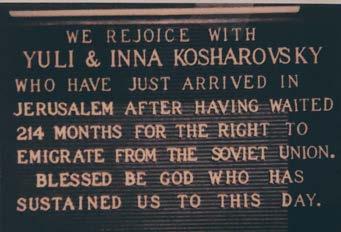

42 Letter from Golda Meir to Rabbi Lookstein, 1976





52
From Rabbi Haskel Lookstein’s Sermon, The Double Blessing of the Soviet Jewry Movement, presented November 5, 2022
II L E AD E R SHIP v S O VIET JEW R Y
(continued on facing page) 39 40 41 39
Congregation Kehilath Jeshurun marching on Solidarity Sunday
40
Anatoly Sharansky speaks at KJ after his release, 1986
41
Letterboard outside KJ celebrating the release of the Kosharovskys from the Soviet Union
And then they would repeat that louder and louder for blocks at a time and I could only think to myself: what a difference between their Jewish posture in 1972 and the way I felt in 1943 in the sixth grade when I would leave school with my Hebrew books, holding them so that the Hebrew print on the covers was against my chest, because, as my father, of blessed memory, used to say, we walked around like question marks. We were good Jews; we kept Torah and mitzvot; but we were bowed as question marks. And here, in part as the result of the Soviet Jewry movement, my kids stood up like exclamation points and were proud and fearless in declaring who they were and what they were fighting for.
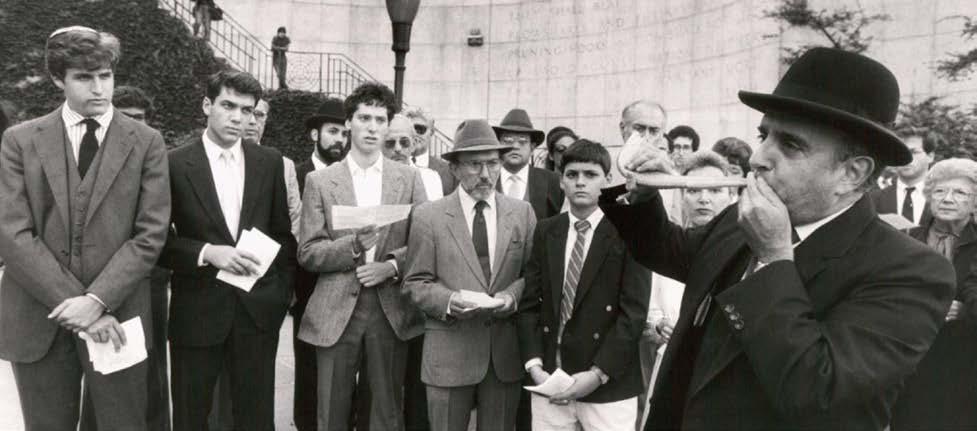

53
That was a great blessing of the Soviet Jewry movement. Not only did it free Soviet Jews, it freed and emboldened us.”
43 Natan Sharansky, with Bibi Netanyahu, then Israeli ambassador to the UN, and Rabbi Haskel Lookstein, at Soviet Jewry rally, 1986.
43 44
44 Rabbi Haskel Lookstein, special prayer service for Soviet Jews, Ralph Bunche Park opposite the United Nations, September 17, 1985.
?!
LEAD BY LOOKING FORWARD
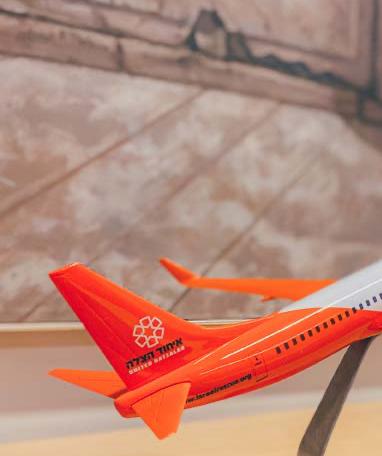
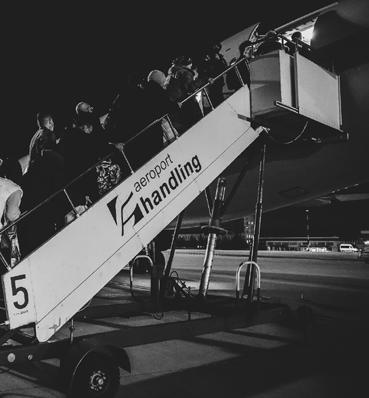
KJ HAS ALWAYS CHAMPIONED BRINGING ALL JEWS TOGE
SOLIDARITY
WITH JEWS AROUND THE WORLD
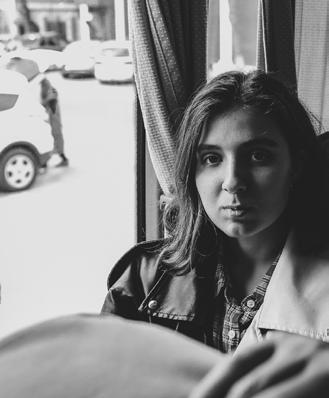
54
46-48 Ukrainian refugees traveling from Kishinev,
46
45 Model plane given to KJ by United Hatzalah in recognition of KJ’s sponsorship.
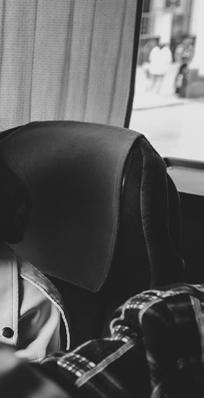

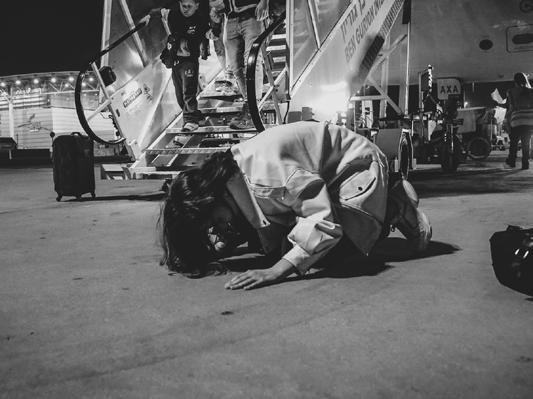
55
FUTURE.
LIDARITY 47 48 49
Moldova, to Israel, on April 7, 2022. The flight, organized by United Hatzalah, was sponsored by KJ members.
AND LOOKING O U T WARD.
THER AND BRINGING TRADITIONAL JUDAISM INTO THE
49 On the plight of European Jews, 1947.
Mass prayer spills out onto 85th st from KJ building in protest of execution of nine Iraqi Jews February 3, 1969

56

57 51
Our congregation has played a leading role in every significant cause in the Jewish comm

FEBRUARY 5, 1943
HELP SAVE TRAPPED JEWISH STUDENTS
Hundreds of Jewish students have been trapped in Shanghai, China and in Siberia as they fled from the wrath of Hitler. These students are victims from the. Yeshivoth of Eastern Europe and are now suffering hunger, disease and all the tortures of succeeding calamities.
APRIL 27, 1984
THE RAPE OF SYRIAN JEWRY
The tragic plight of Syrian Jewry continues unabated. There have been disturbing reports of beatings, incarcerations and torture of those caught trying to escape... The approximately 500,000 Jews remaining in Syria are not permitted to freely practice religion...
A CALL TO ACTION 1. Letters and telegrams, stressing the humanitarian aspects of the problem of Syrian Jewry and noting the gross violations of human rights involved, should be sent to the United Nations Secretary General... 2. Letters and petitions should be sent to His Excellency Ambassador Dia-Allah El-Fattal, Permanent Representative of the Syrian Arab Republic... 3. Cables should be sent directly to President Hafez al-Assad, Presidential Palace, Damascus, Syria... - The KJ Bulletin - The KJ Bulletin
This news was conveyed to Rabbi Lookstein from sources close to the center of suffering. The Rabbi has been asked to raise a special fund to bring some measure of relief to these unfortunates. He is trying to raise the sum of $1.000 for that purpose in the congregation. He already is in receipt of a contribution of $250.00 from one of our members.
54 Detail of stained glass window depicting Leviticus in Kehilath Jeshurun lobby.
58
WË ÅRË
KËËPËRS
WË ÅRË ØÜR BRØTHËRS’ KËËPËRS
ØÜR BRØTHËRS’
II L E AD E R SHIP vi S O LI DAR ITY
WË
unity: Soviet Jewry, The State of Israel, and the needs of persecuted Jews around the world.

Operation L’hitraot Takes Off
We reprint for our readers on page 2 Rabbi Haskel Lookstein’s article which appeared in the Jewish Week over the weekend of October 26-28. The article describes Operation L’HITRAOT which Congregation Kehilath Jeshurun and Ramaz School developed under the leadership of Sandy Eisenstat and Rabbi Lookstein in order to stimulate American Jewish missions to Isreal in the coming weeks and months. We are happy to announce that as this Bulletin goes to press more than 16 organizations and communities in the metropolitan area have already scheduled such missions in response to Operation L’Hitraot...The KJ mission left on Saturday night, November 10. A mission of 50 students from Ramaz School is scheduled to leave on Monday night, November 19.
Bazaar Brings a Bit of Israel to Synagogue
Yesterday’s bazaar featured 13 merchants and artists from Jerusalem, along with American importers of Israeli products. The Israelis have been hit hard in recent months by a downturn in tourism. Several shops represented are on Ben Yehuda Street,a main shopping area and a frequent target of suicide bombers.
The idea for the bazaar came from Kehilath Jeshurun’s sisterhood, which enlisted the help of nine other Manhattan congregations.
Money was raised to fly the merchants and their wares to New York. Hotels donated rooms, and members of Kehilath Jeshurun played host to the merchants. Money from sales went to the merchants and artists. In all, 115 volunteers helped the overwhelmed merchants, who clearly had not seen days this busy for quite a while.
59
54 ÅRË
årë WË ÅRË
KËËPËRS NOVEMBER 16, 1990 MAY 13, 2002
ØÜR BRØTHËRS’ KËËPËRS wë
ØÜR BRØTHËRS’
- The New York Times - The KJ Bulletin 55
55 “We Are Our Brothers’ Keepers”: KJ Bulletin headline in June 28, 2002 issue, page 6.
ISR AEL
Israel has always been part heart and soul of KJ. of the


It may seem remarkable that one synagogue in New York can count among its former members the current President of Israel, Isaac Herzog, and the previous Prime Minister, Naftali Bennett; but this is no coincidence. Beginning with the RaMaZ, who was an avid Zionist, and on through the years, KJ’s heart has been with Israel. From fundraisers to missions, to Operation L’hitraot, which brought Israeli merchants to New York during the intifada, KJ has been a strong champion and proud supporter of the Jewish State.
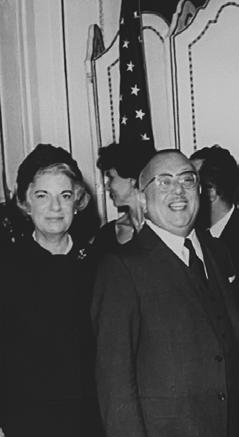
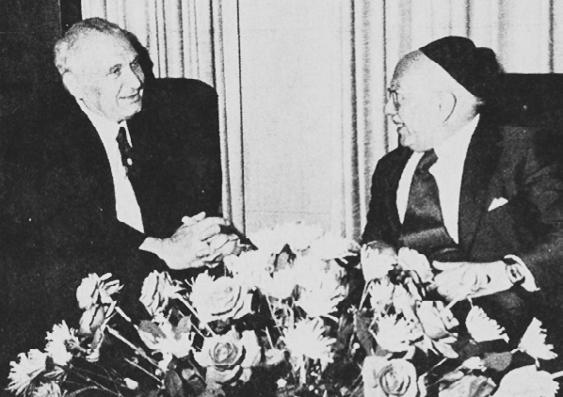
II L E AD E R SHIP vii IS RA EL
60
Rabbi Joseph Lookstein with President Katzir of Israel at the President’s home
56
57
Rabbi Joseph Lookstein with
58


61 59
Golda Meir

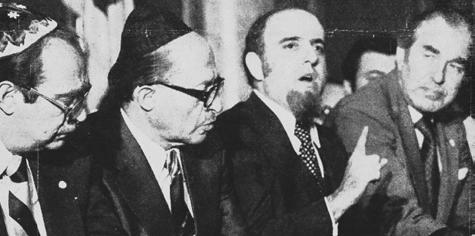

II L E AD E R SHIP vii IS RA EL 62 61 62
60 Letter to Rabbi Haskel Lookstein from Menachem Begin, August 14, 1977.
61 Rabbi Haskel Lookstein making a point at the Tisha b’Av service. To his left are Prime Minister Begin and Ambassador Dinitz; to his right is Ambassador Herzog.
62 Israel Bonds evening with special guest, Abba Eban.
63 Blue cornflowers, symbolic of the blue in Israel’s flag, are distributed by the American Zionist Council in honor of Israel’s 7th Independence Day.
Regina Resnik, an American opera singer, pins a flower to the lapel of Rabbi Joseph Lookstein, second from right, at an event at Radio City Music Hall, April 27, 1955.

Beg
63
63
“We sat together as fellow Jews in common memory, common unity and common resolve.”
M.
SINCERELY YOURS,
i The Ramaz School ii More Than a Place to Pray iii Sisterhood & Social Action iv Growing as a KJ Family III UNITY COMM01 Formal community dinner
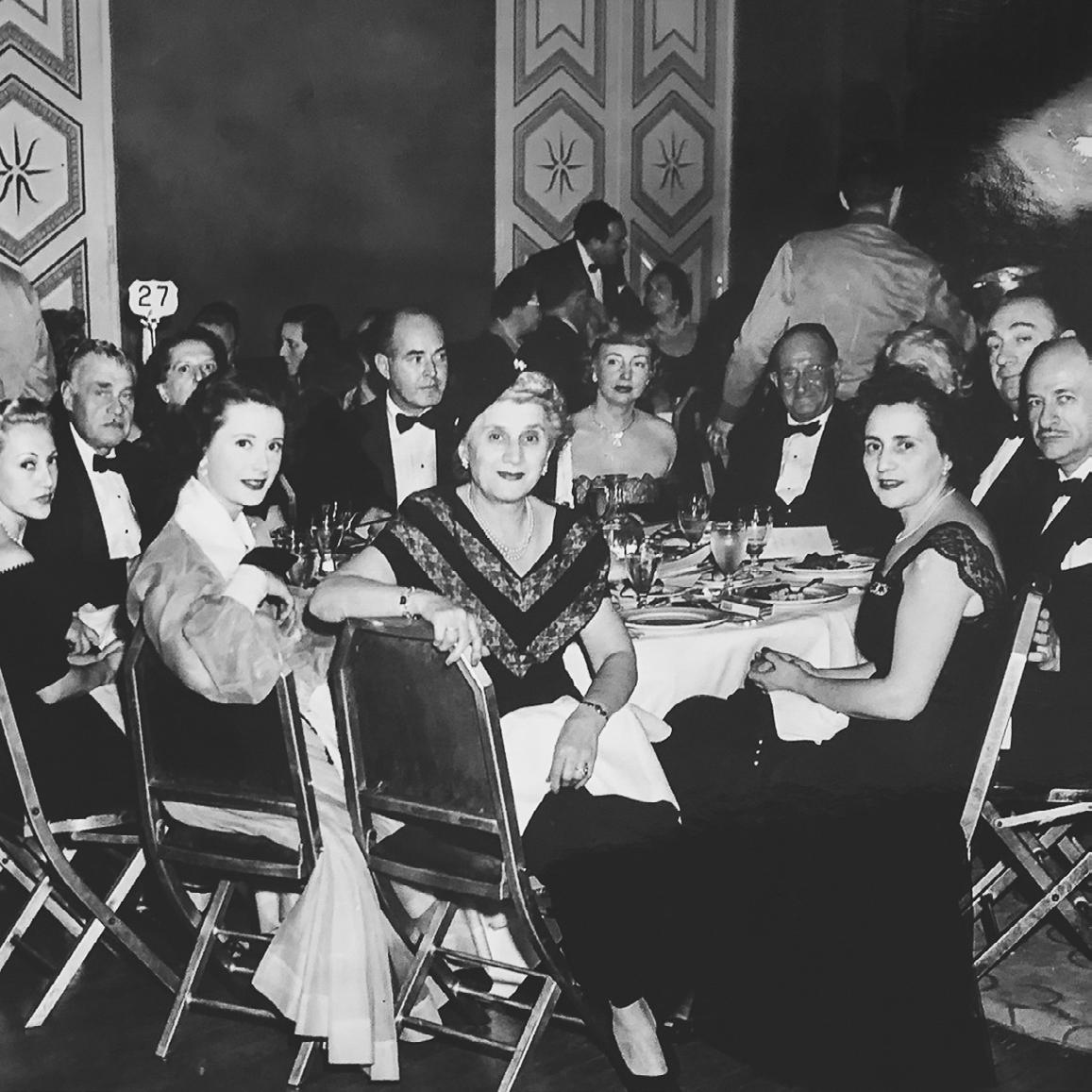
1
RAMAZ SCHOOL
Ramaz is the most important initiative ever undertaken by KJ. It was the first of its kind: a coeducational school that was both an academy, a first-rate school of education, and a Yeshiva, a school of traditional Jewish learning.


III CO MMU N ITY i THE RA M A Z SCH OO L 66
2 3
THE
Rabbi Joseph Lookstein in an autobiographical essay, “Ramaz Is Born”:
“It was then that my thoughts regarding a modern, progressive and private Day School began to crystalize. For years, the subject never left my thoughts; before long, it became an obsession. I began to feel that the so-called traditional Yeshiva was inadequate as an educational medium for a modern American Jewish child. A new type of school with a new orientation was an imperative necessity for the survival of Judaism in America.
Such a school should not reject the “old” merely because it was old, nor should it adopt the “new” merely because it was new. I was seeking a synthesis of the old and the new, a fusion of the traditional and modern. In my mind, I kept thinking of the old Biblical verse: “And they placed the ark of God upon a new cart.” The old holy ark must be retained; what is needed is a new vehicle.
4 5
Sign announcing future site of Ramaz School and KJ Synagogue House
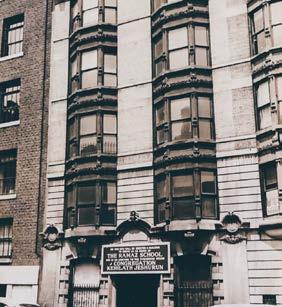
6 Ramaz students in the Salute to Israel parade
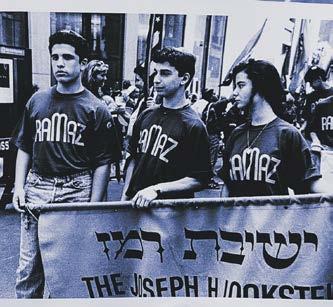
The thousands of students who have studied at Ramaz remain to this day KJ’s most precious legacy. When Rabbi Joseph Ber Soloveitchik visited KJ in December 1972, he and Rabbi Joseph Lookstein discussed issues facing their respective school communities; Rabbi Soloveitchik had founded the Maimonides School in Boston. Rabbi Soloveitchik remarked to Rabbi Joseph Lookstein: “Rabbi Lookstein, it is neither your drashot (sermons), nor my shiurim (lectures), that will make us worthy of getting into Gan Eden (heaven). Rather it is your Ramaz and my Maimonides that will get us in.”
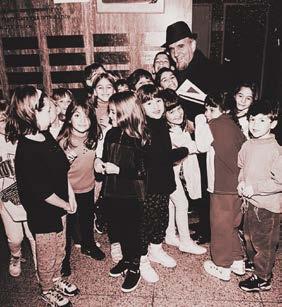
67
I saw in Ramaz a new vehicle to convey the tradition to succeeding generations of American Jewish youth.”
Rabbi Haskel Lookstein with Ramaz students, December, 1997
From the beginning, KJ was more than a

PLACE
PRAY. to
turned into a brick and mortar synagogue with a Sisterhood and a Men’s Club. From the beginning, these groups were a hub of communal activity and sponsored multiple educational and cultural events. By the 1930s, KJ’s Sisterhood and Men’s Club were rallying in support of European Jews, and raising funds for US troops.


68
III CO MMU N ITY ii M OR E TH AN A PL A CE T O P RA Y
It started out as a chevra, a community, which soon
7 / Overlay: a letter from the famed Rabbi Moshe Mordechai Epstein, Rosh Yeshiva of the Slobodke Yeshiva, to Jacob Hecht, The President of Kehilath Jeshurun, thanking him for the congregation's friendship and support; 1903.

8 / Center, Sisterhood Luncheon, 1951
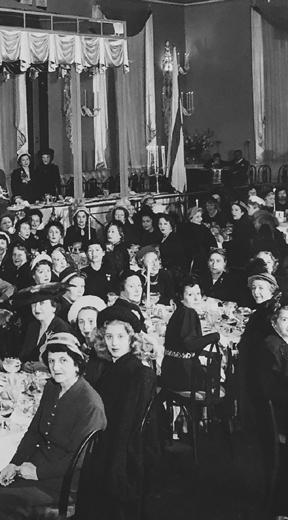
9 / Left, copy of the Passover Bulletin from 1923. The earliest bulletins were bilingual, written in English and Yiddish.

69
SISTER H D
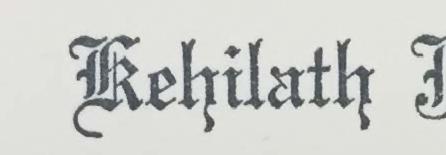
A congregation without a Sisterhood is like a home without a mother.
 JOSEPH LOOKSTEIN
JOSEPH LOOKSTEIN
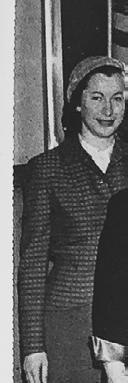
Since its inception in 1886 as the Ladies Auxiliary Society, the women of the Sisterhood have been committed to service to the synagogue; educational support of the Ramaz School; cultural and social activities and charitable giving to KJ, to the larger Jewish community, and to worldwide causes.
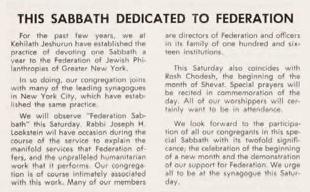
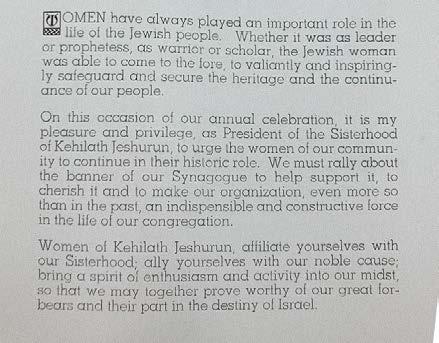
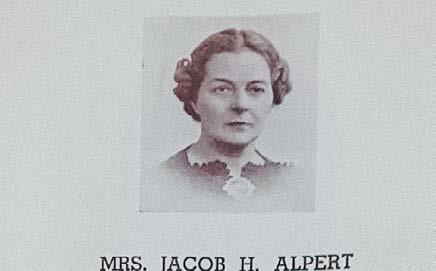
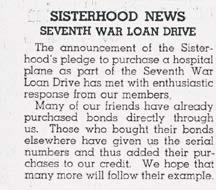
Today, the Sisterhood is composed of women of all ages and professions who despite busy lives give their time and talents to support the congregation and remain the heartbeat of the community.
January 29, 1960 April 27, 1945
70 11
MRS. JACOB H. ALPERT President of Sisterhood
III CO MMU N ITY iii SISTE R H OOD & S O CI A L A CTI ON
KJ BULLETIN
10
/ Sisterhood War Bonds drive to raise funds for a hospital plane for US troops
Women of Kehilath Jeshurun, afliate yourselves with our Sisterhood; ally yourselves with our noble cause; bring a spirit of enthusiasm and activity into our midst, so that we may together prove worthy of our great forebears and their part in the destiny of Israel.
In KJ, women found a home for their own voice. In the early years, women built an exceptional Sisterhood, which undertook large projects raising funds and collecting supplies for various causes, including the State of Israel. In recent years, women have taken a major role in the KJ leadership team as trustees and officers, and organized a women’s tefillah service.
11 Note to the community from Sisterhood President, Rose Alpert, published in the program for the 1937 Dinner Dance.


12 Below, center - At a luncheon sponsored by the Sisterhood in commemoration of Israel’s fifth birthday, a group of the members light candles on a blue and white birthday cake.

13 Below, right Sisterhood and Sephardic joint cooking event, November 17, 2022
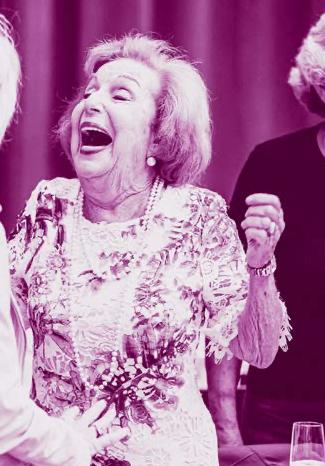
71 35
CHARITY
&
SOCIAL

KJ has always considered Chesed, charity and social action, to be one of the pillars of its mission. KJ has developed close relationships with the UJA-Federation of New York, as well as multiple charities around the world.
CHESED CAMPAIGN TO SYNAGOGUE








72
14 III CO MMU N ITY iii SISTE R H OOD & S O CI A L A CTI ON
SOCIAL ACTION
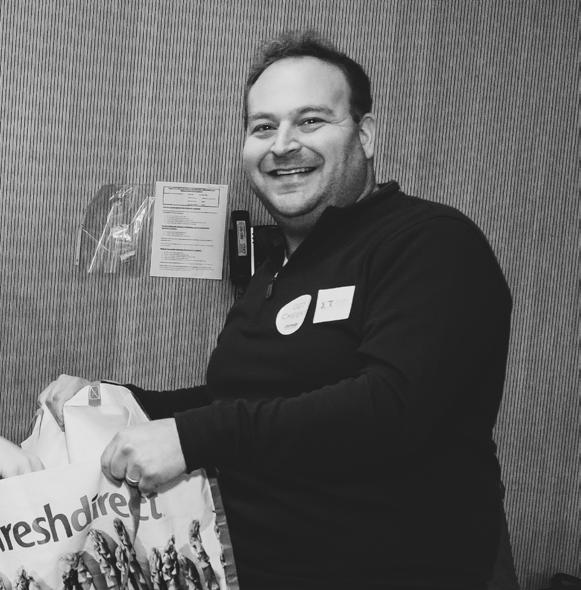
ADDS NEW DIMENSION

SYNAGOGUE LIFE
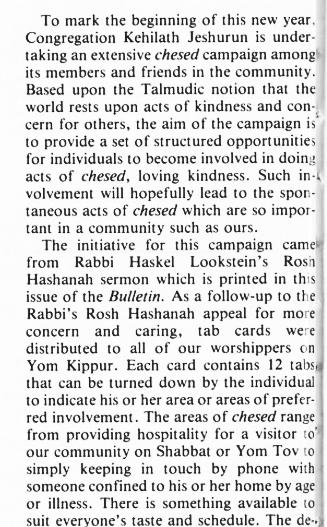
73
October 3, 1983 October 3, 1983
CAMPAIGN
Today KJ is a vibrant community of over 1,100 families, who pr


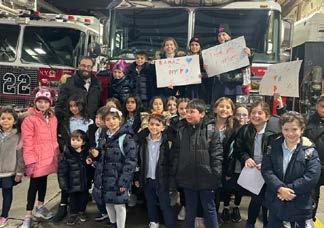

GROWING
GROWING
74
III CO MMU N ITY iv G RO WI N G A S A KJ F A MILY
21 22 28 19
ay together, learn together, and stand in support of each other.

GROWING
GROWING
AS A KJ FAMILY

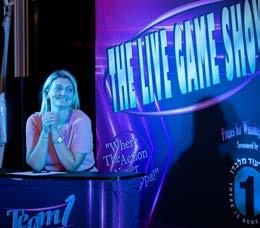
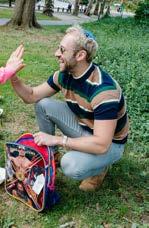
75
23 23b 24

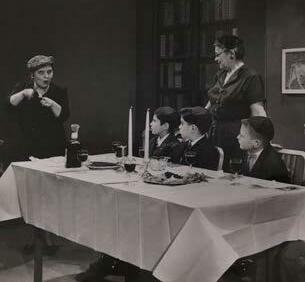
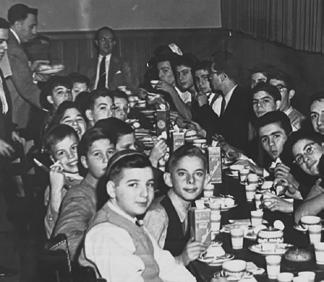


76
III CO MMU N ITY iv G RO WI N G A S A KJ F A MILY & 15 16 17 18
THEN

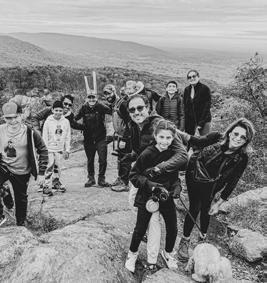
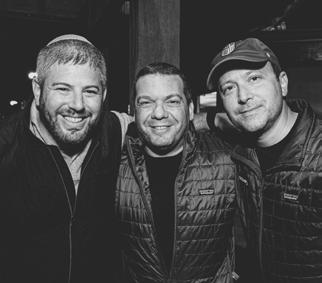
77 & 18b 20 NOW
EXTENDED CAPTIONS INDEX
T RAD ITI ON
6 Left to right, top row: Cantor Samuel Jacobson, Abraham Levy, Samuel I. Hyman. Center row: Rabbi Peikes, Jacob Webster, Dr. Joseph Baum, Moses Davis, David Berg, I. H. Finkelstein, Mr. Harris. Seated: Solomon Bachrach, Theodore Crohn, Isaac Cohen, Moses Phillips, Samuel Golde, Sexton A. S. Marks.
34 Photo includes Lionel Etra and his mother, Reba; Rabbi Dale Polakoff; Bob Kurzweil, Helen Nash; and Norman Bulow. Each Torah cover represents different mitzvot.
40b “Kehilath Jeshurun Institute” classes pamphlet, 1952-1953. Full image on page 80, bottom right hand corner.
44 U.S. Attorney General Janet Reno, right, speaks to, from left, Congresswoman Carolyn Maloney, Manhattan District Attorney; Robert Morgenthau; and Rabbi Haskel Lookstein following a “Town Hall Meeting on Crime and Violence” on February 14, 1994.
I
78 I ND EX
ND EX / 1 Index Yosef Mendelevitch, former prisoner of Zion and one of the Leningrad Nine who tried to highjack a plane to fly to Israel in the spring of 1970, flashing a victory sign here on the podium at a Solidarity Sunday rally, following his release from the Gulag in the former Soviet Union. Left to right: Robert Abrams, New York State Attorney General; Hon. Seymour Lachman, five term NY State Senator and former President NYC Board of Education; Cantor Sherwood Goffin zt'l of the Lincoln Square Synagogue on the guitar; Rabbi Haskel Lookstein, Chairman of the Greater New York Coalition for Soviet Jewry.
IMAGE CREDITS
T RAD ITI ON / P A GES 1-31
Foreword image: Esther Feierman
1, 6 Diamond Jubilee 632-707, 1872-1947: Congregation Kehilath Jeshurun 1946 Yearbook, Yeshiva University Archives
2, 3, 5, 7, 9, 19-22, 26, 29, 30, 34, 37, 40, 40b, 41, 45, 47-50 Congregation Kehilath Jeshurun Collection, Yeshiva University Archives
4 1930 photo of 127 E 82nd St. Irma and Paul Milstein Division of United States History, Local History and Genealogy, The New York Public Library
8 The NYC Municipal Archives
10, 11, 31-33, 39, 42, 43 Rabbi Haskel Lookstein personal collection
12 Miles Dixon
13 Timothy Macy/FXFowle
LE AD E R SHIP / P A GES 32-63
1, 2 Rabbi Haskel Lookstein personal collection
3-6, 14-18, 20-21, 25, 38-39, 49, 55, 57, 58, 61, 62 Congregation Kehilath Jeshurun Collection, Yeshiva University Archives
7 The Forward
8 The Jewish Press
9 Yeshiva University Archives
10 Associated Press
11-12 The New York Times
13 Photo by Arthur Studios, New York
19, 23-24, 26, 28, 30-33, 42, 60 Rabbi Haskel Lookstein personal collection
22 The Jewish Week-American Examiner, August 5 1979
27, 29, 45, 54 Talia Laniado
34 Olga Mak/JJ Ignotz Photography
35 KJ Bulletin, October 18, 1974, Yeshiva University Archives
36 KJ Bulletin, March 10, 1978, Yeshiva University Archives
37, 40, 43 The Ramaz School, 75th Anniversary Book, 2012
14 Jake Naughton for The New York Times
15, 17, 18, 38 Talia Laniado
16 Esther Feierman
23 Tilly Blair Photography
24 JJ Ignotz Photography
25 The personal collection of Mayer Davis, The Jewish Star
28 Cantor A. Rutman invoice for services, May, 1915, Congregation Kehilath Jeshurun Collection, Yeshiva University Archives
35 The Ramaz School, 75th Anniversary Book, 2012
36 Tali Seinfeld
44 Robert Kalfus / Associated Press
46 Underwood & Underwood, Coolidge Family Papers, Vermont Historical Society
41 KJ Bulletin, Feburary 1986, Yeshiva University Archives
44, 51 Larry C. Morris/The New York Times
46-48 United Hatzalah Ukraine KJ Ukraine Mission
56 KJ Bulletin, October 5, 1945, Congregation Kehilath Jeshurun Collection, Yeshiva University Archives
63 The New York Times
C O MMU N ITY / P A GES 64-87
1, 5, 7, 8, 10, 11, 15-17, 29 Congregation Kehilath Jeshurun Collection, Yeshiva University Archives
2-4, 6, 9, 1 Index Rabbi Haskel Lookstein personal collection
12 KJ 1952-1953 Year Book, Congregation Kehilath Jeshurun Collection, Yeshiva University Archives
13, 23 Olga Mak/JJ Ignotz Photography
14, 18b, 19-22, 23b, JJ Ignotz Photography
18, 25, 27, 28 Talia Laniado
26 Esther Feierman
Acknowledgements Image: Esther Feierman
79
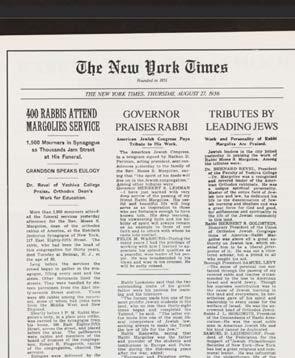


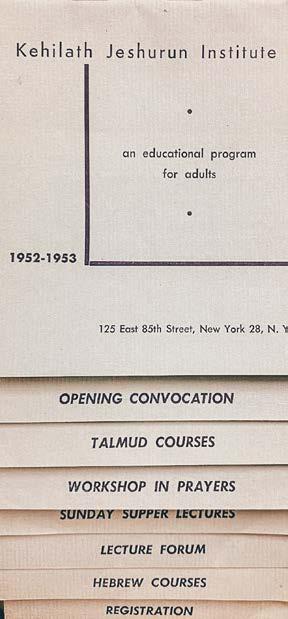



80 I ND EX 05 09 T RAD ITI ON C O MMU N ITY 07 T RAD ITI ON T RAD ITI ON 08 40b T RAD ITI ON 12 LE AD E R SHIP



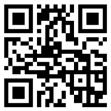
81
46 1 T RAD ITI ON I ND EX KJ
1973
To see the extensive list of photo and document credits, please use this QR code.
BULLETI N


82 26 27 82
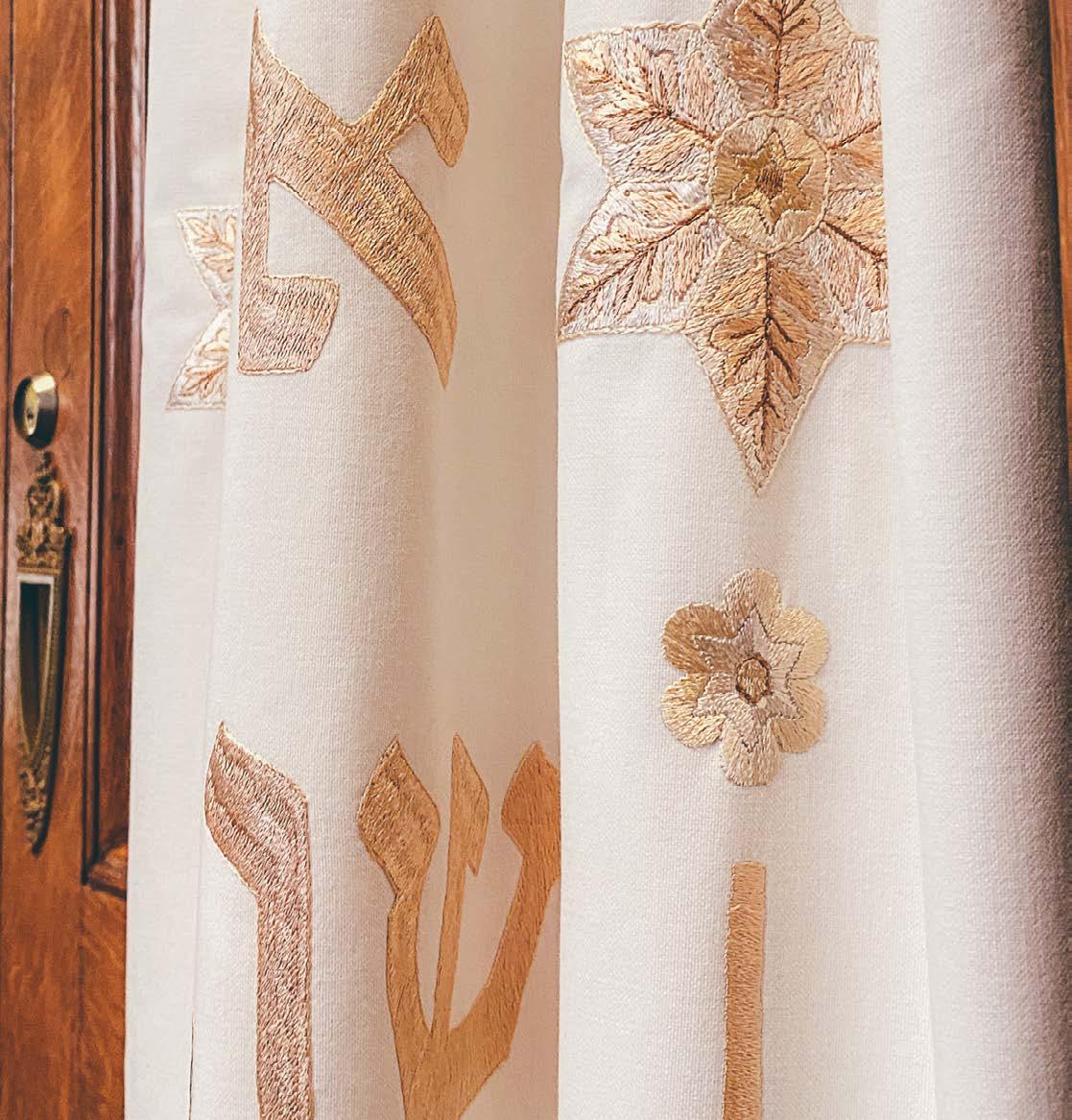

83 28 83
Dear Rabbi Steinmetz,
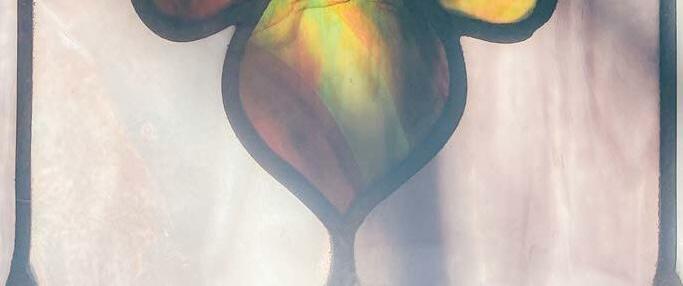
We would like to express our gratitude to you for passionately spearheading this monumental undertaking. Your enthusiasm and dedication motivated us; your vision for KJ and its legacy inspired us.
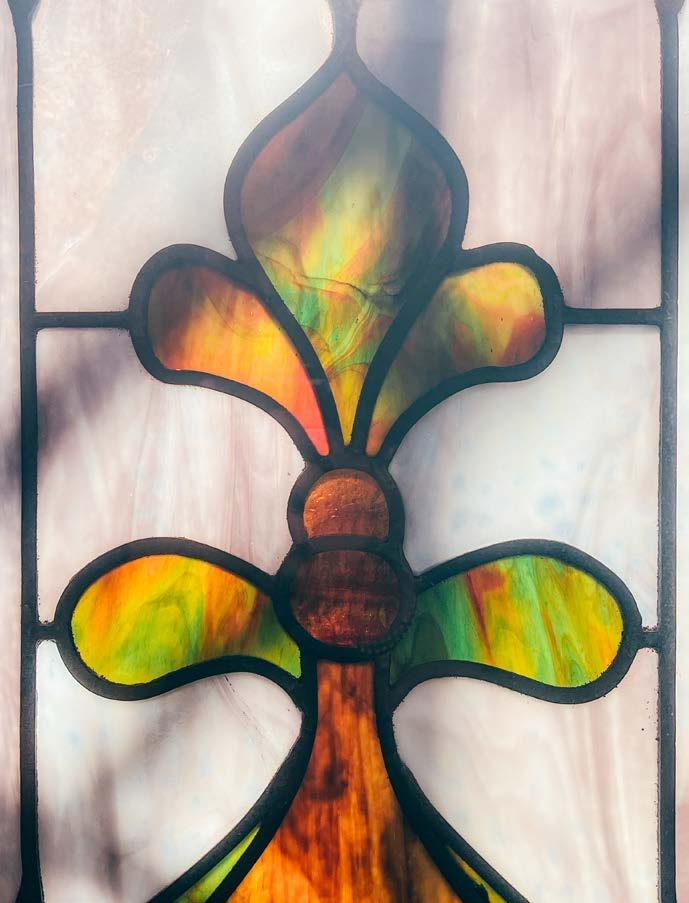
How this project has evolved! What started as a simple pamphlet last May underwent a metamorphosis in every way, leading to this arresting body of work that gives voice to both KJ’s past and future.
From conceiving of and guiding the project, to writing content and digging for documents, you ensured that no stone went unturned.
Thank you for championing our team in every way - by providing moral support, laughs, cookies, and answers to our late night questions. It was an honor and a privilege to be a part of this journey.
84
THANK
YOUYOU
We would like to thank Barbara Braffman and Stephanie Katz, who are leading the KJ 150th History Project, and Dahlia Kozlowsky, a professional archival researcher, for their creativity, dedication, and hard work. They spent countless hours combing through digital and physical archives to curate and annotate this exceptional visual portfolio. This project would have been impossible without them.
Esther Feierman, KJ’s Director of Communications, and Talia Laniado, our in-house graphic design genius, brought these artifacts to life, and wove together a century and a half of history to produce a vivid picture of KJ’s story.
Thank you as well to Rabbi Haskel Lookstein for sharing his wealth of knowledge and insight with our researchers. Thank you to Dina Farhi for taking on multiple tasks including archival research, team coordination, and facilitation. Thank you to Riva Alper, Rabbi Roy Feldman, Rabbi Meyer Laniado, and Leonard Silverman for their editorial assistance and ongoing support. Thank you to our dedicated printer Yossi Majer for his meticulous attention to detail and for whom no job is too difficult.
This team invested endless hours of research and review into this project, and their passion is evident on every page of this book. They took on this project as their personal tribute to the synagogue’s history. We thank them for the gift they have given our community.
85
THANK
An exceptional team of volunteers and professionals put this remarkable book together.
WO RD AFTER
הרותל המדק ץרא ךרד
Good character is a prerequisite for Torah (Vayikra Rabbah). The above statement by our sages is emblazoned on the Donor Wall in the lobby of the KJ Synagogue House. It occupies the same space in the lobby of the Ramaz Middle School.
The simple meaning of this statement is that one cannot be a Tzaddik without being a mensch first. Menschliness comes before Godliness or, as my father used to put it, “We are closest to God when we are nearest to humanity.”
This beautiful book, which reviews one hundred-and-fifty years of service to God and to humanity, is a chronicle of our efforts to live up to this religious standard. It is also a challenge to us for the future, to honor our priorities: to love God’s people, to love the State of Israel, to love Torah and mitzvot, and to live lives of chesed and mishpat.
In another fifty years, may a new generation be able to chronicle our faithfulness to this way of living a Jewish life.
29 / Congregational “Book of Life,” 1920.
86 A FTE R W ORD
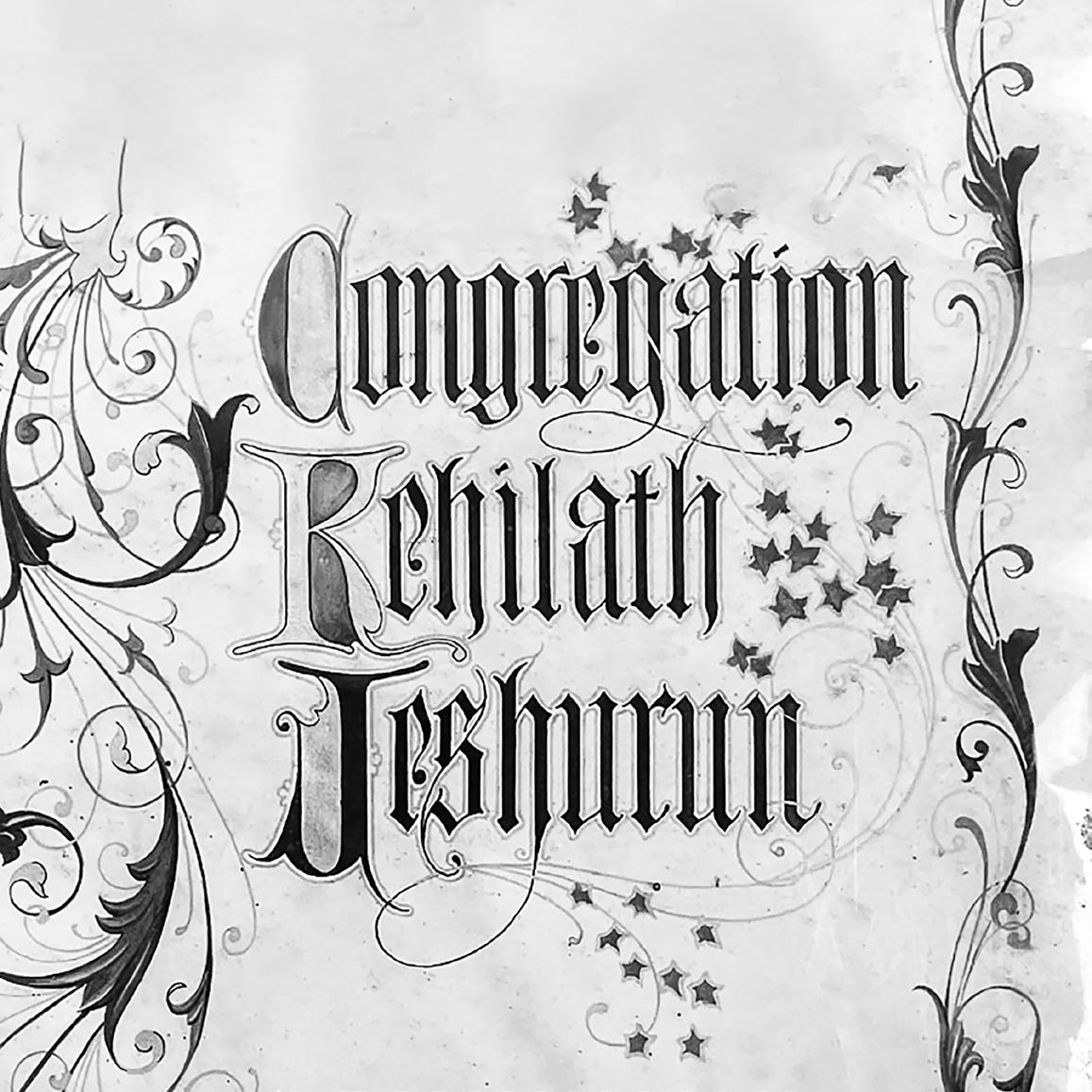
One hundred & fifty years ago,
Kehilath Jeshurun became a community with a unique tradition. It pioneered a mix of Orthodoxy and modernity, an American Judaism that could appeal to every Jew. KJ is a synagogue that is profoundly committed to the Jewish people, through activism, outreach, and education, and is a world-renowned institution that is a role model for many other congregations. With a strong foothold in the present and an eye towards a bright future, KJ celebrates highlights of its remarkable past–a look back at a history of tradition, leadership, and community.
a small group of men joined together to create a “chevra” for divine worship–perhaps with the hopes of establishing a seven-day synagogue. What actually happened was far more dramatic.
125 EAST 85TH STREET, NEW YORK NY























































 42 / Cornerstone laying of the expansion of the Synagogue House, 1964.
42 / Cornerstone laying of the expansion of the Synagogue House, 1964.





























 Cohen
Cohen





















































































 JOSEPH LOOKSTEIN
JOSEPH LOOKSTEIN















































